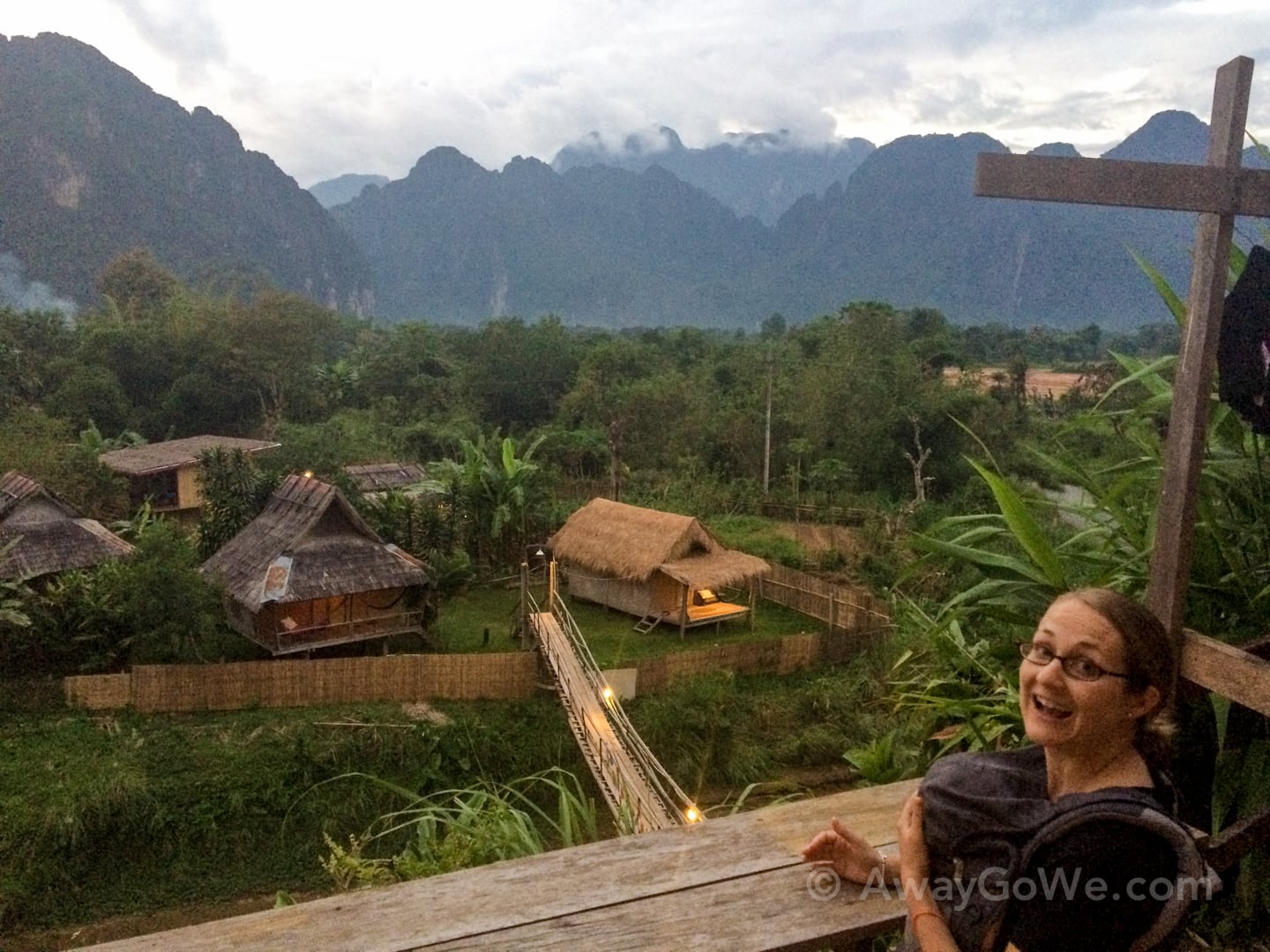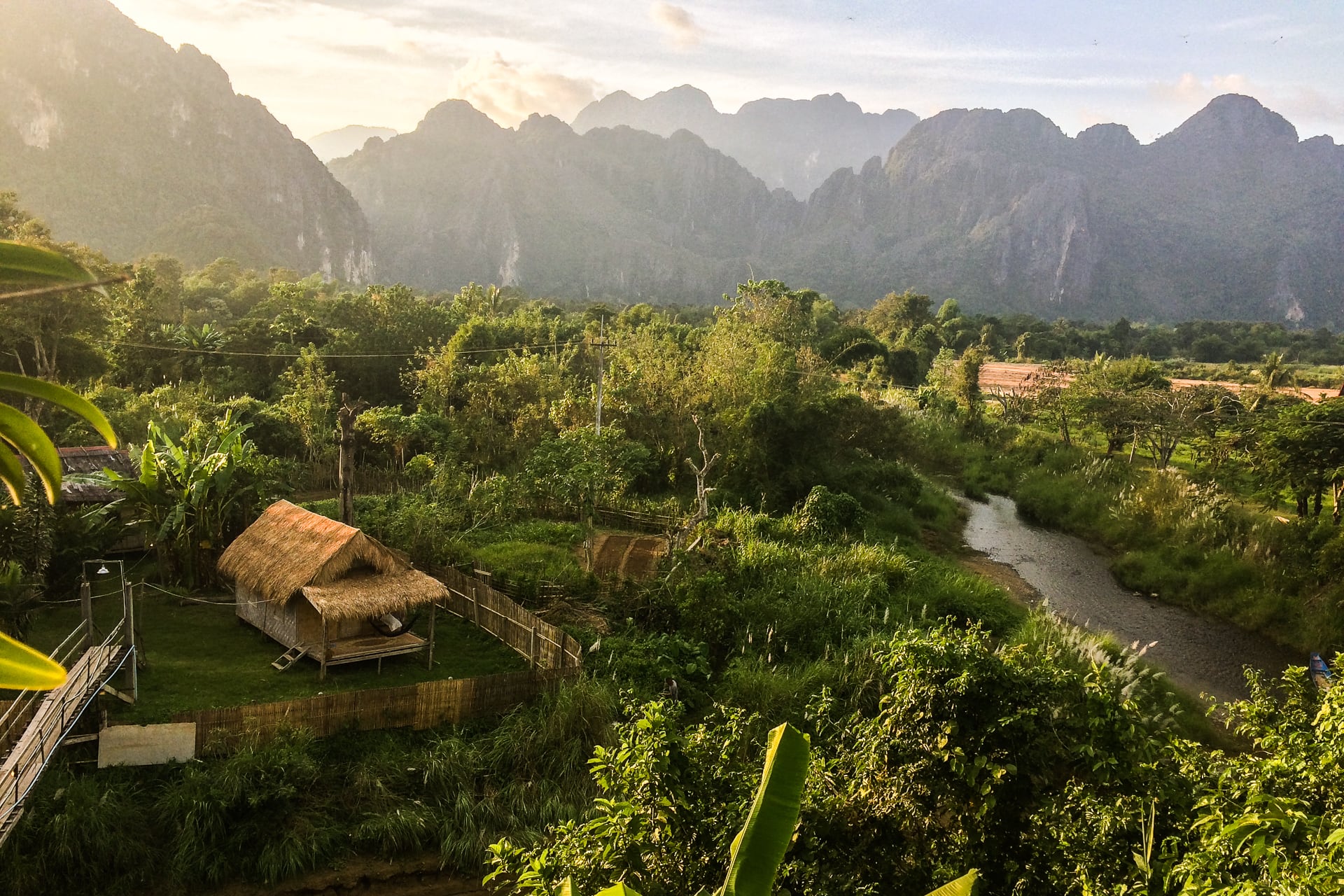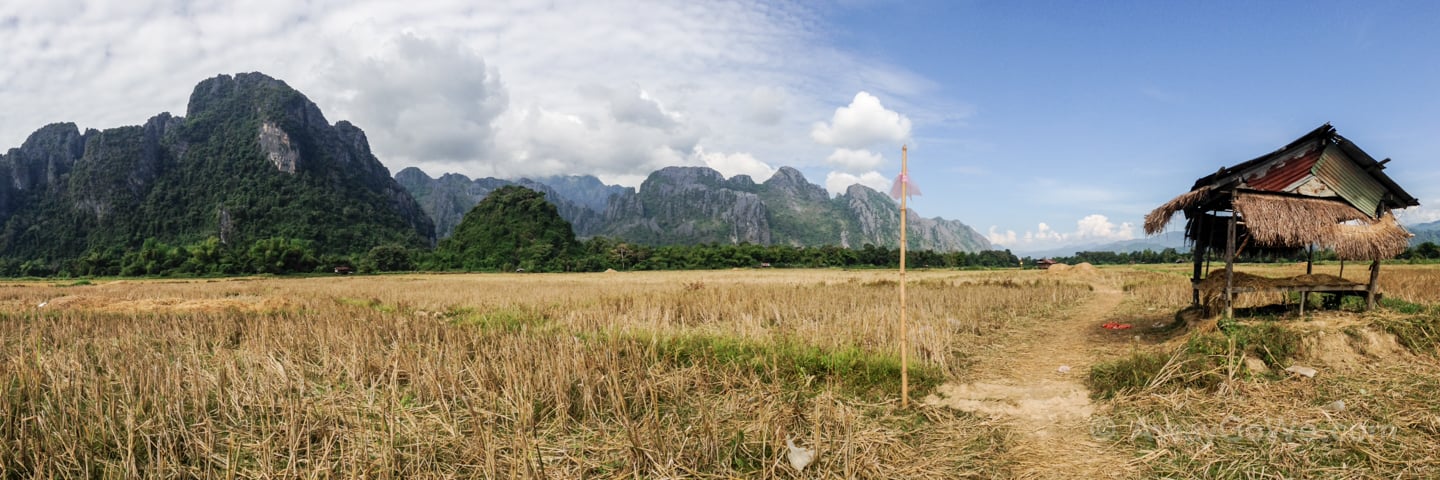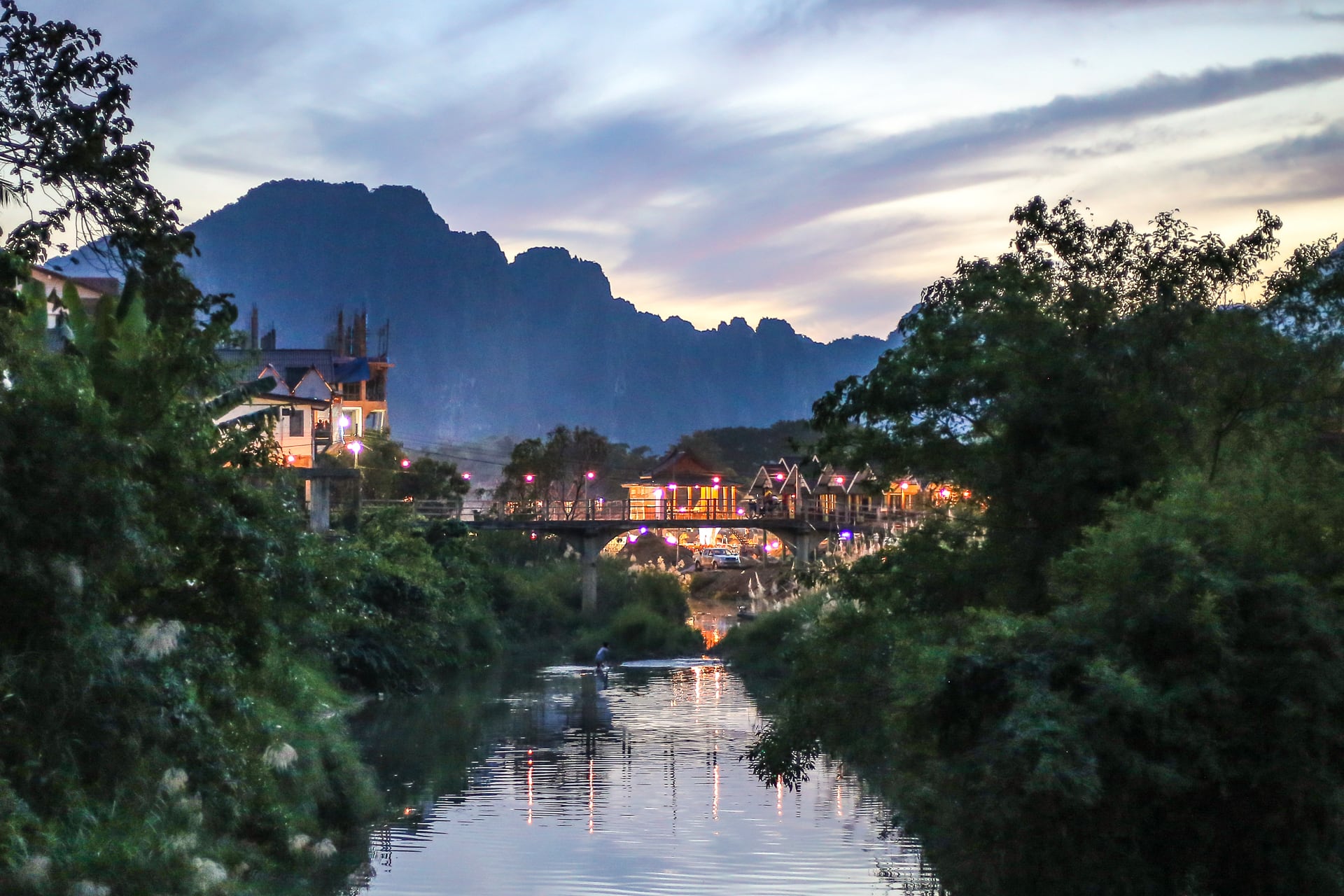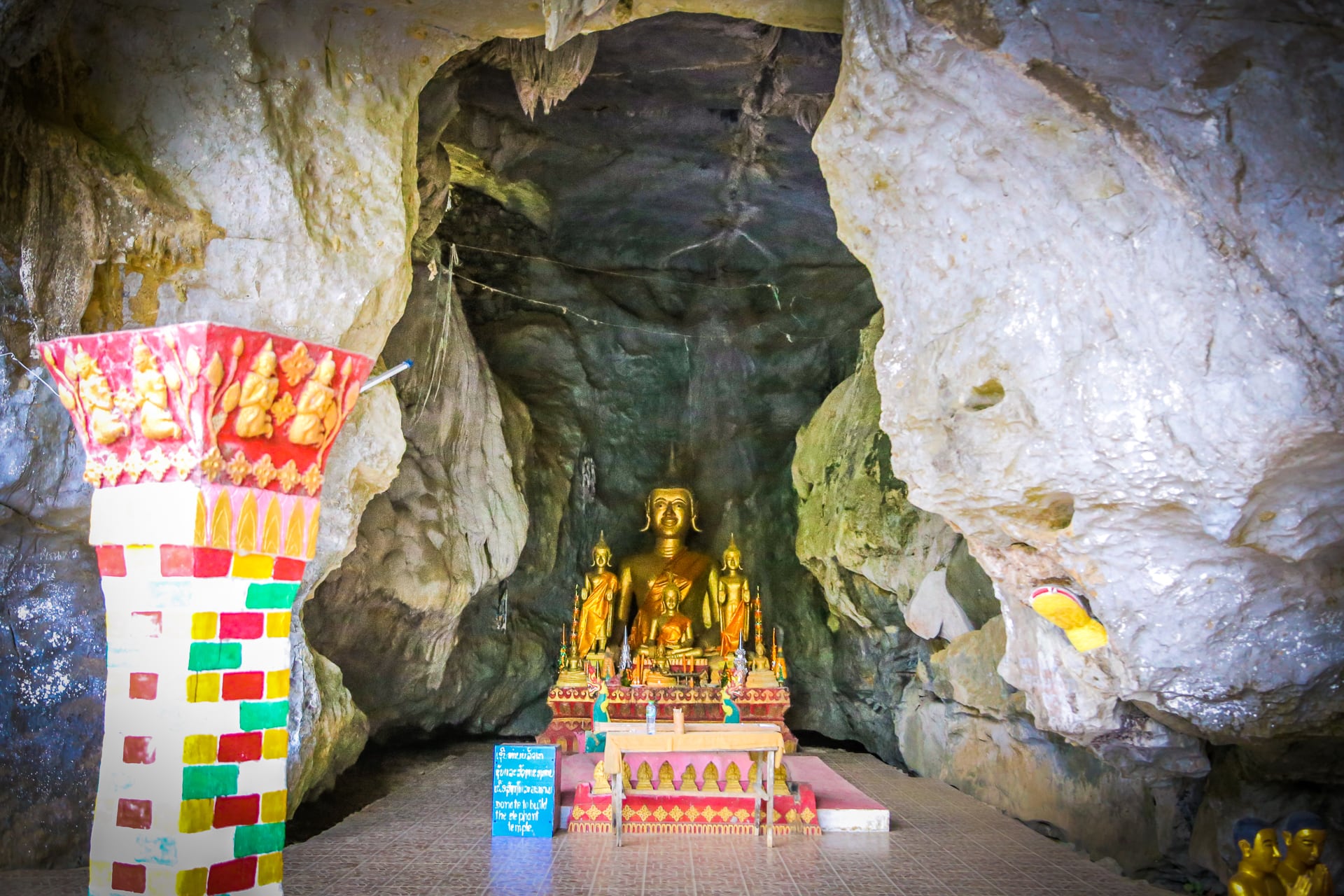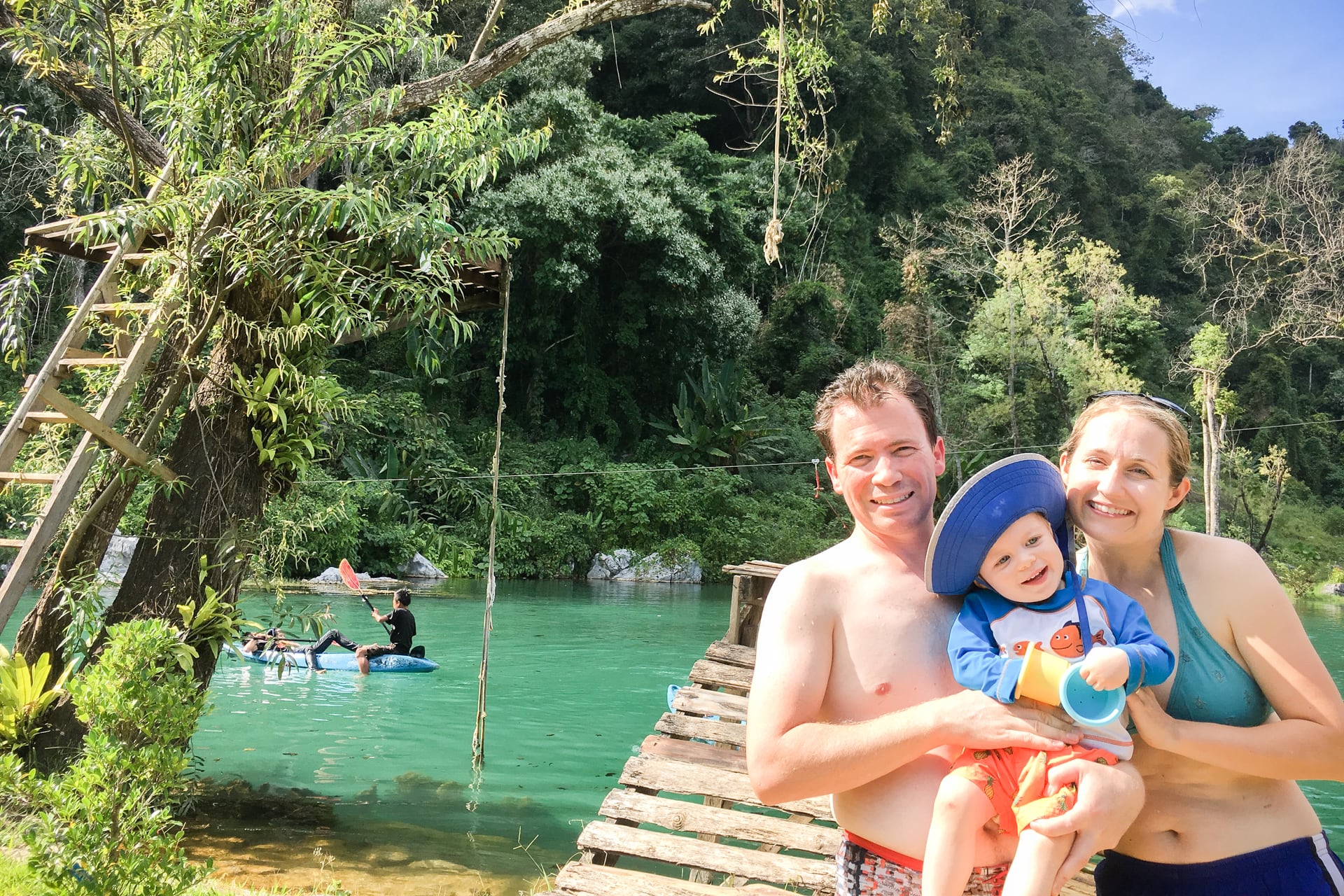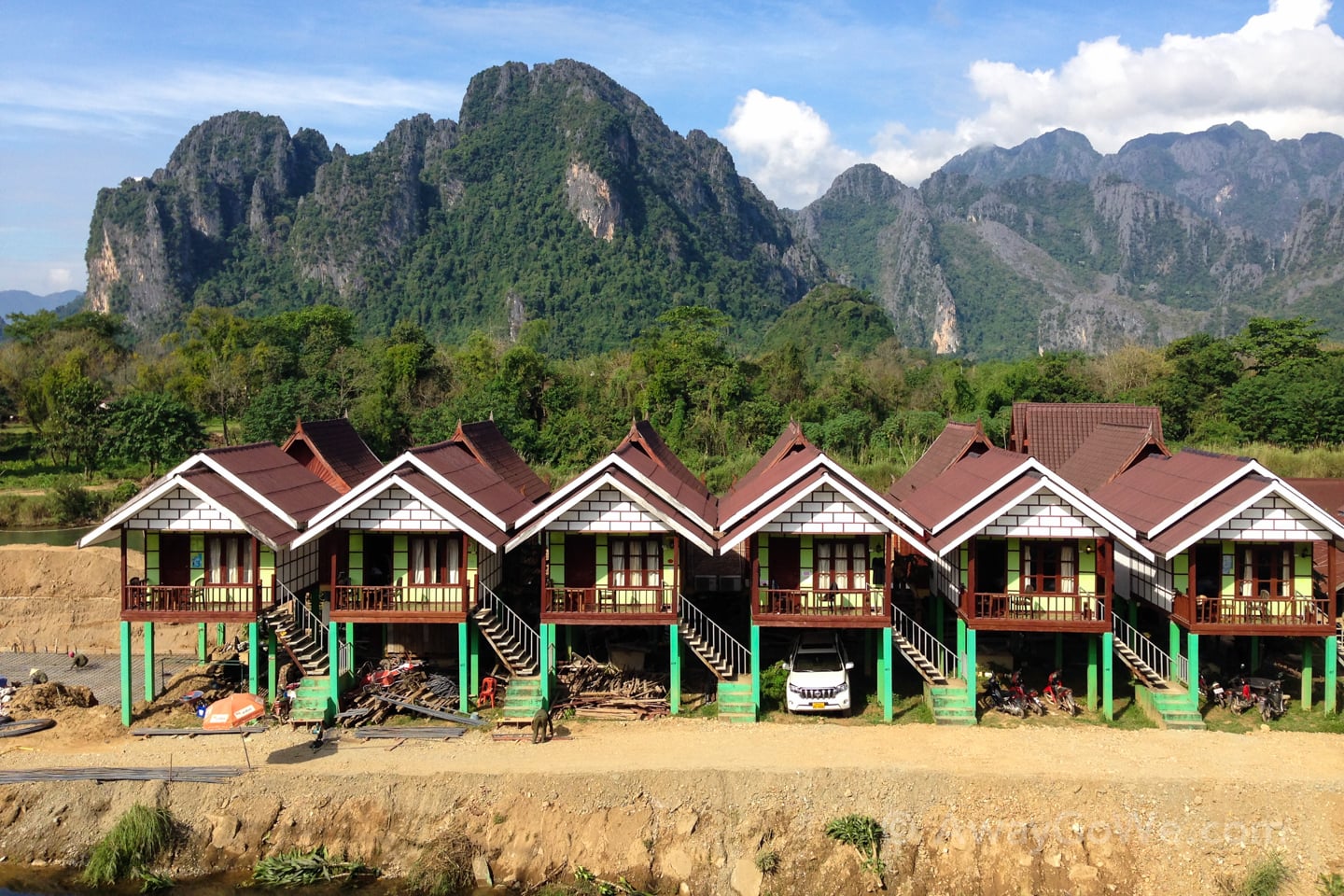
On one of our walks around town, Lori spotted signs for “Lusi Cave.” The signs said the cave was a 2km hike from town, which sounded perfectly manageable with a baby.
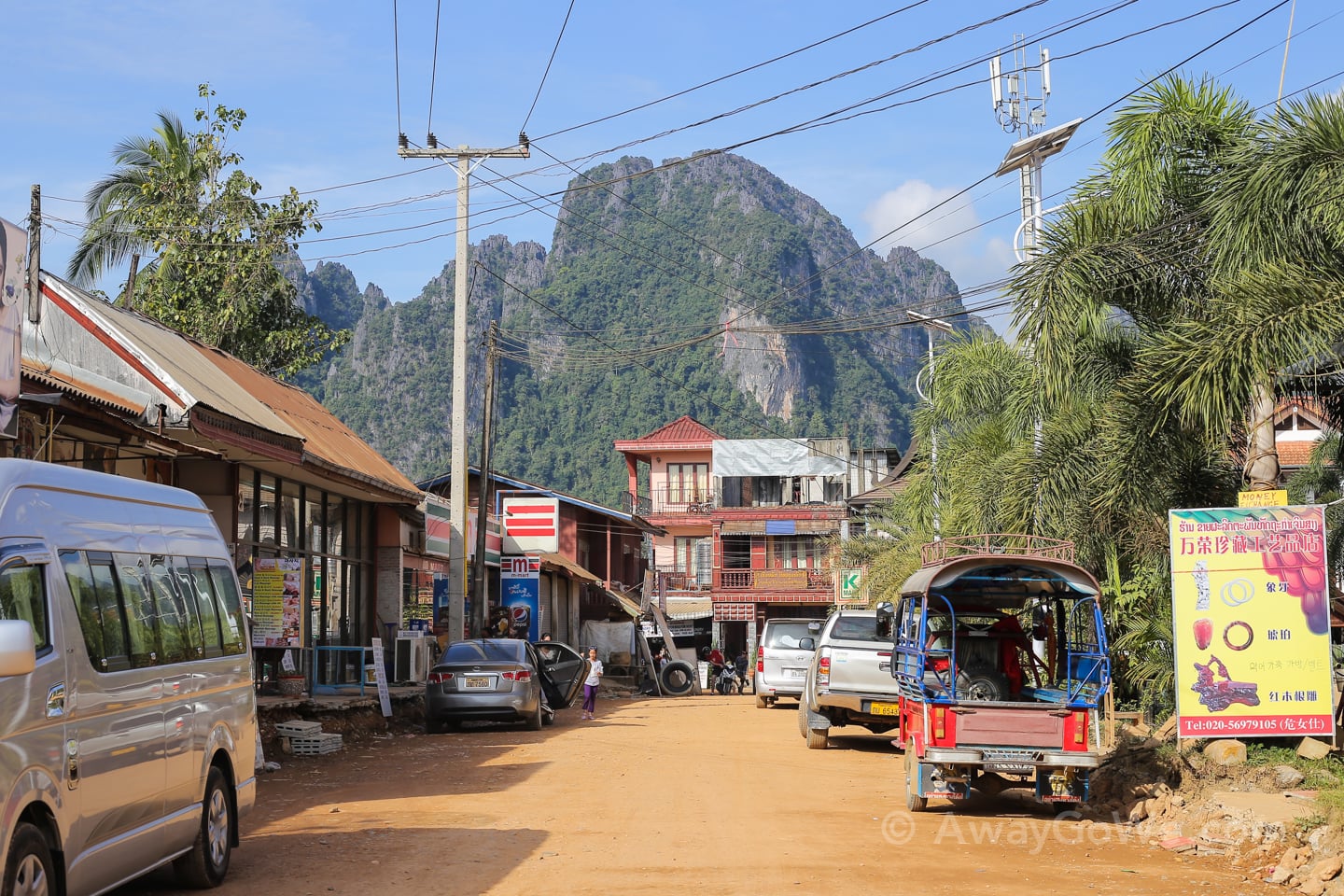
A backpacker’s breakfast appealed to us this particular Sunday morning, so we sought one out. Our search led us to Otherside 2 restaurant, part of a complex of eateries with some association to bungalows across the river. And it’s easy to see why they chose to have a presence on this side of the water. Quite a view!
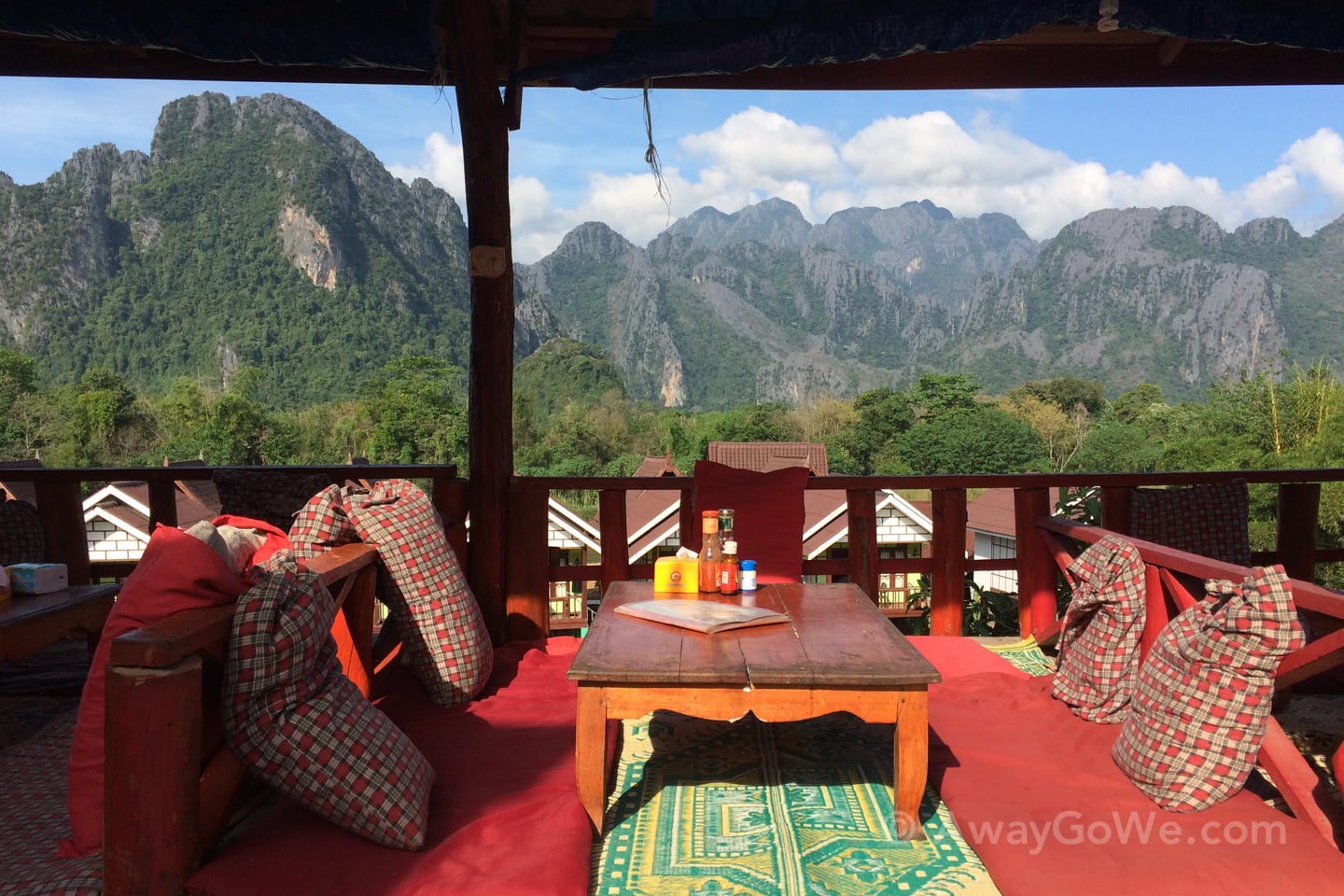
Otherside 2 was eerily empty for this holiday weekend. Granted, they were in the midst of major construction next door, but still, here it is, high season, holiday weekend, and no one to be seen. Not even Koreans!
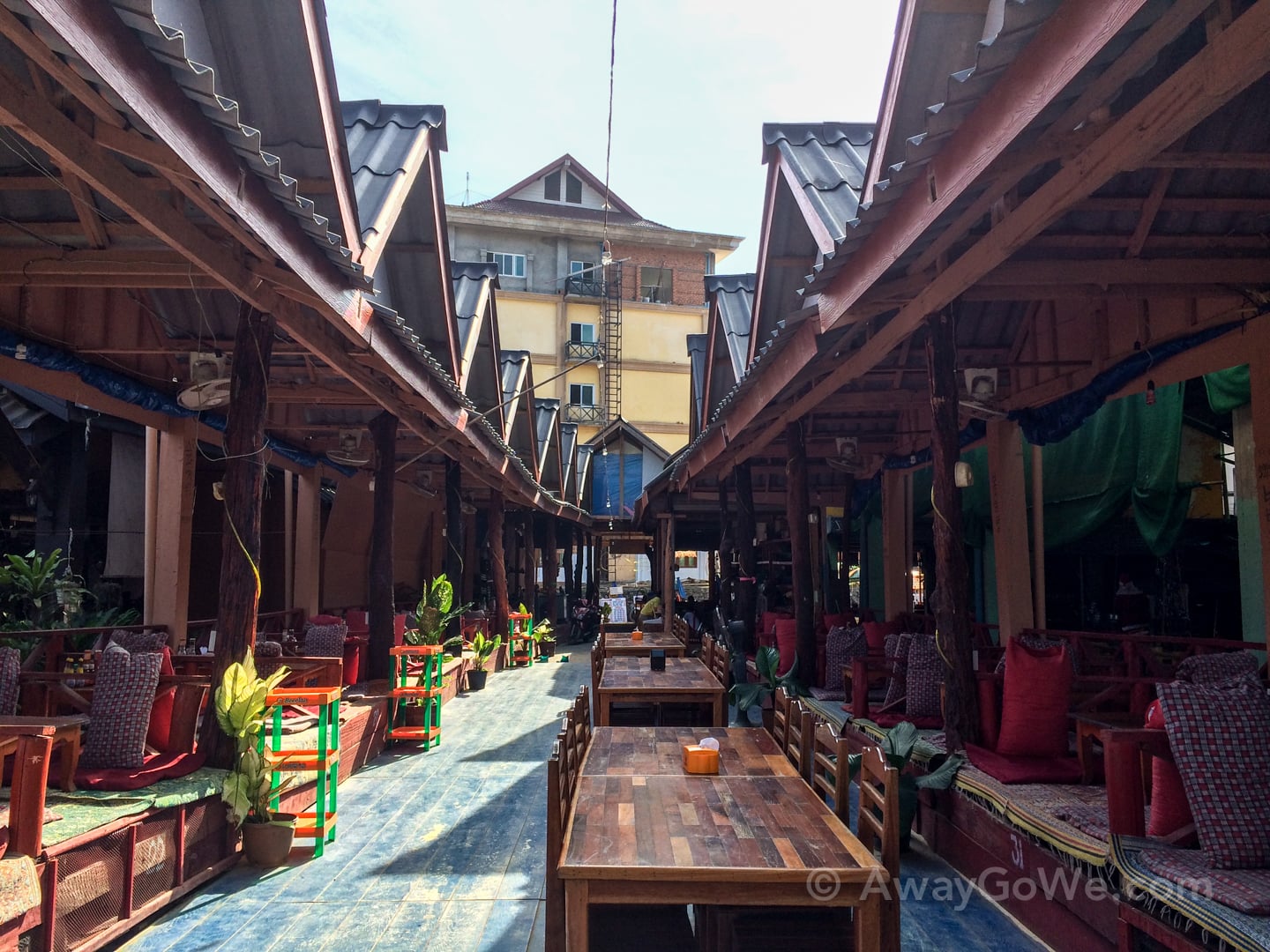
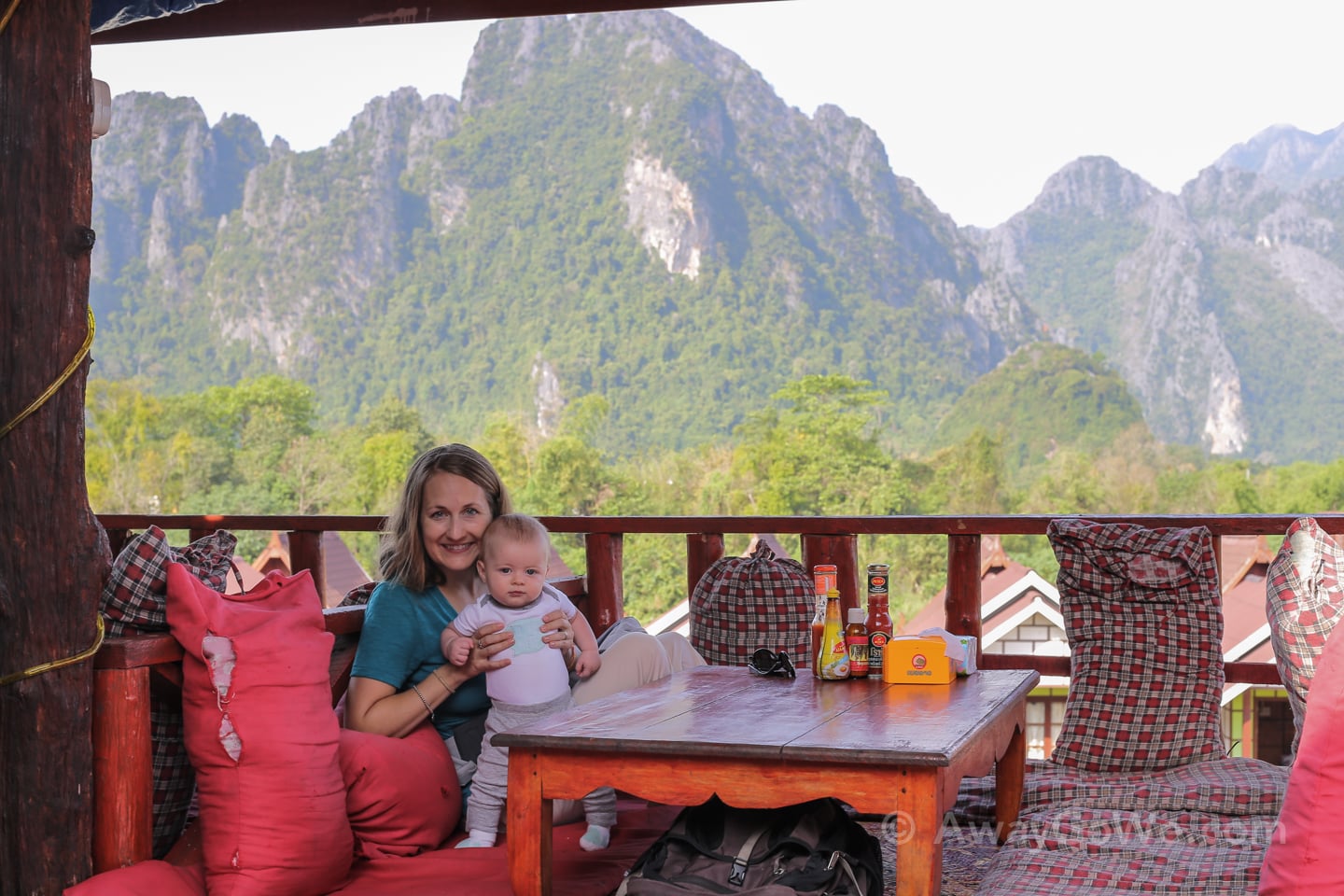
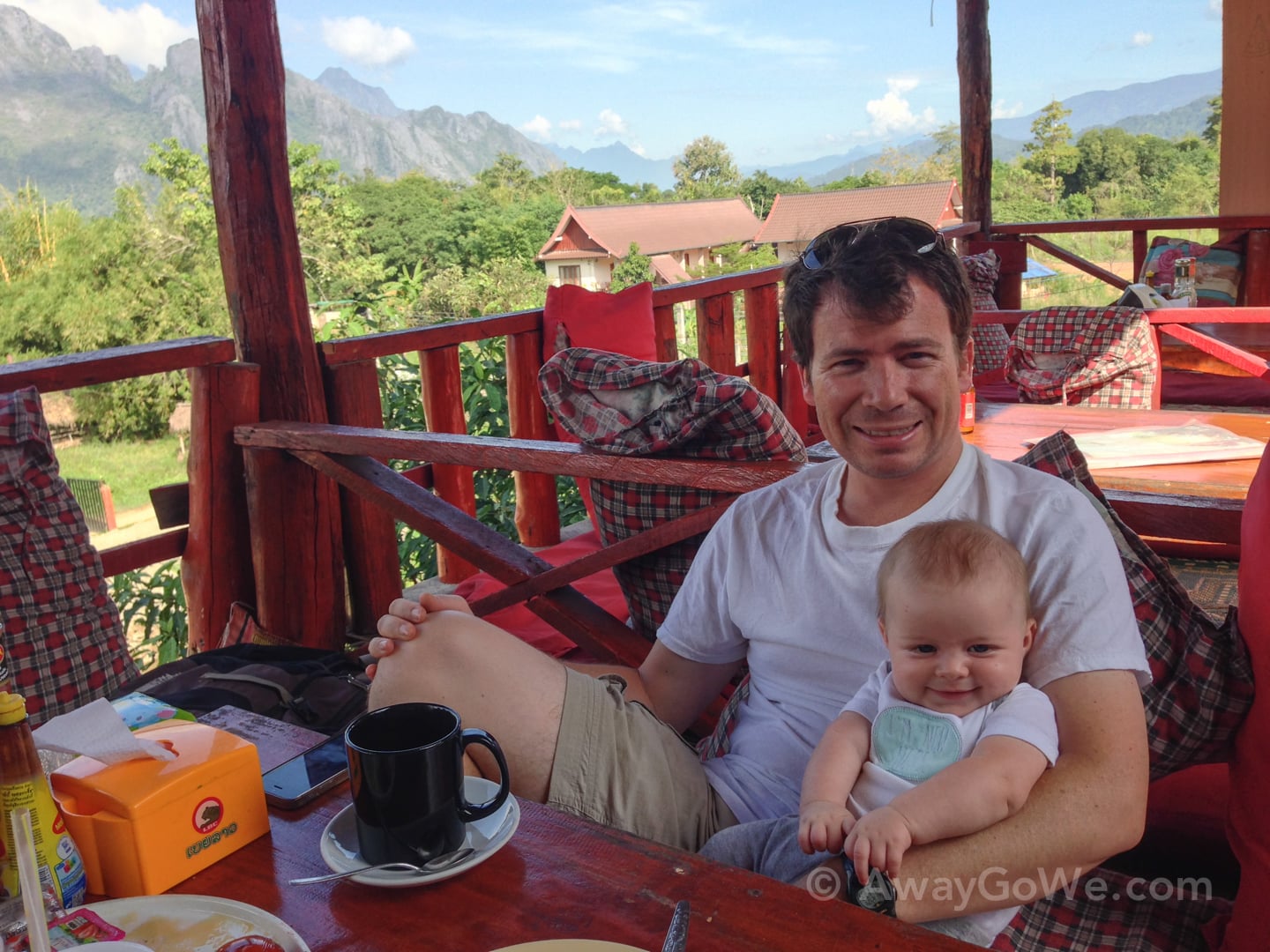
After a satisfying (and thoroughly greasy) breakfast, we suited up and headed across the bamboo bridge to find our cave.
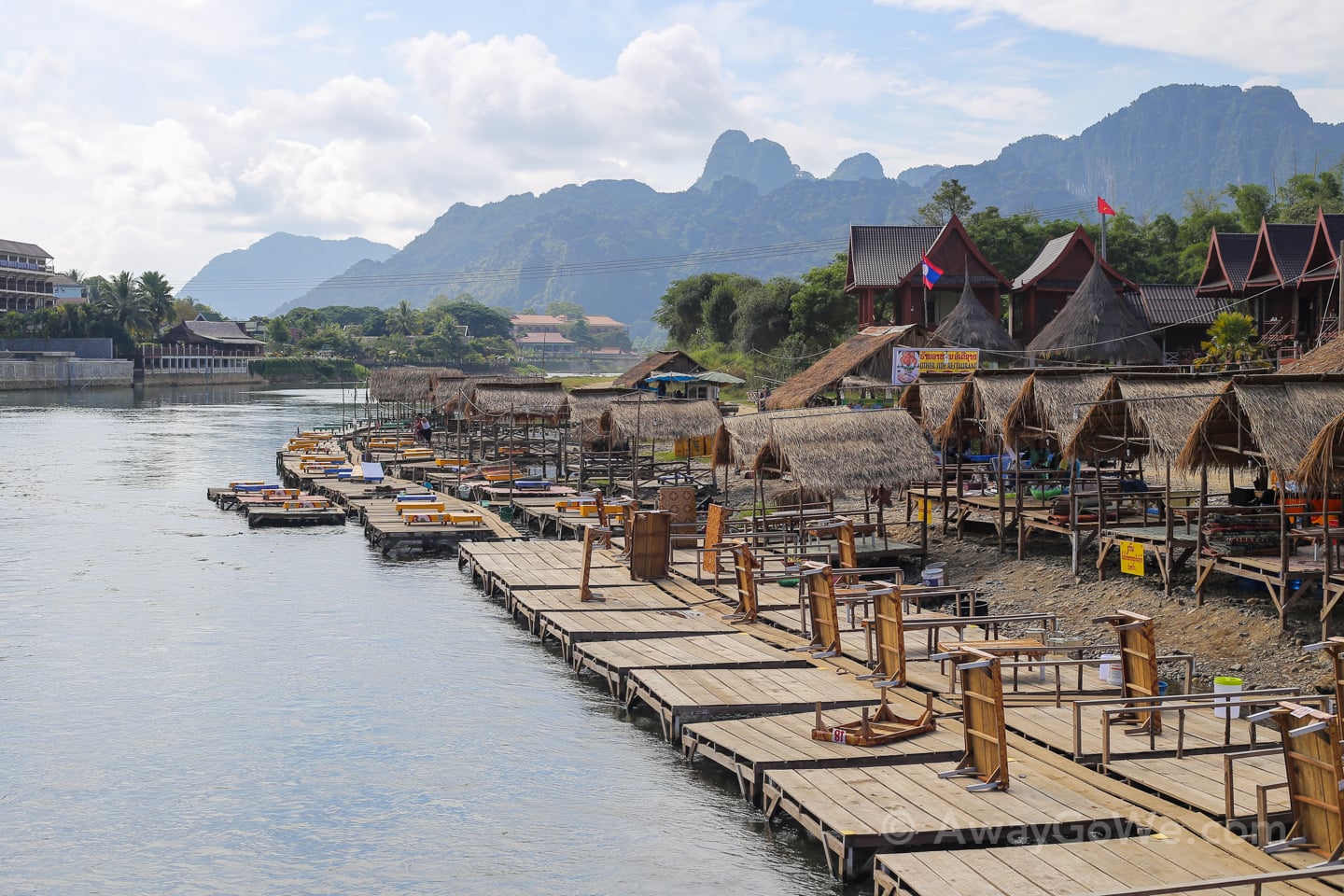
Standing on the bamboo bridge in the center of town offers a 360-degree perspective on the changing face of Vang Vieng. With the young Western party scene having moved on, today’s visitor to Vang Vieng is on average older, more affluent and more discerning. Budget bungalows are making way to six-story “luxury” hotels along the waterfront, catering to the growing middle and upper classes in China, Korea, Laos, India, and elsewhere in the region. Now in it’s third major incarnation in three decades, Vang Vieng has become virtually unrecognizable to the locals who lived here a generation ago. It’s likely only a matter of time until the iconic seasonal bridge, itself, makes way for something more permanent and appealing to the changing demographic of tourists.
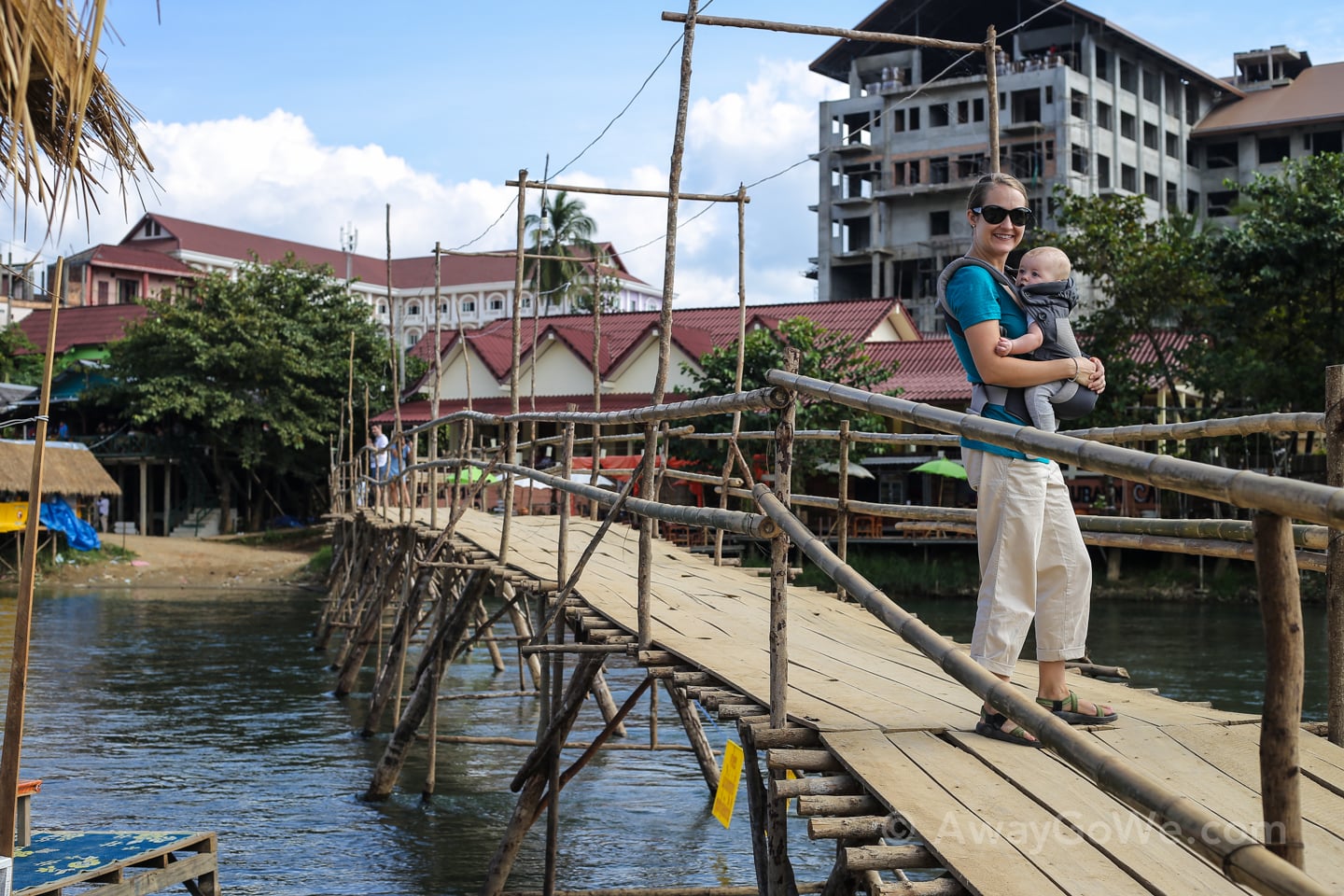
The signs point that-a-way!

The path to the cave initially zigzagged through farmland, fully exposed to the mid-morning sun. Even in this cooler season, it was fixin’ to be a hot one.
As we followed the path left, then right, then straight, then left and right and straight again, it soon became clear that we were being led to the jungle-covered monolith with the giant orange flag on it.
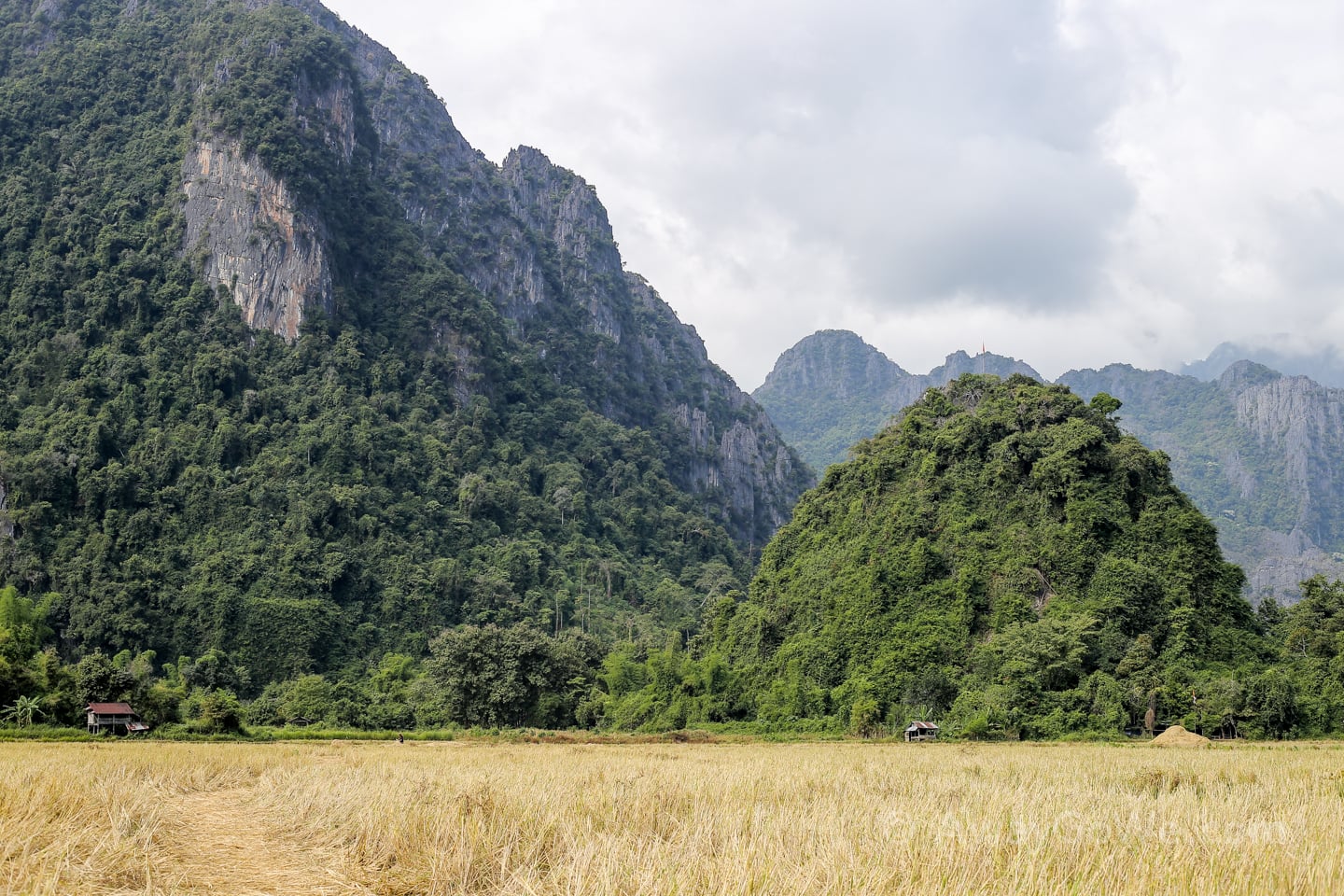
We reached the cave trail at the base of the mountain and noticed a rickety ladder leading up. It was evident that Noe was going to hang back and keep an eye on mommy while daddy went to go scout things out. After clambering up a series of ladders that inspired no confidence whatsoever, I fumbled my way into a small opening marked “cave.” I was not alone. There were a pair of shirtless middle-aged Russian men ahead of me, taking provocative selfies with the rock formations. I looked around, felt I’d seen enough, and made my way back out of the cave.
Apparently you can follow the ladders and semi-marked trail to the top of the hill for a superb view of the city. I ascended about 30 feet before deciding the undertaking would require more time and effort than I was willing to put forth, and began the awkward decent over loose bamboo ladders back to Lori and Noe.

Back down at the bottom, Lori had seen a path leading deeper into the jungle, so naturally, we took it. Moments later, we came upon a sign.
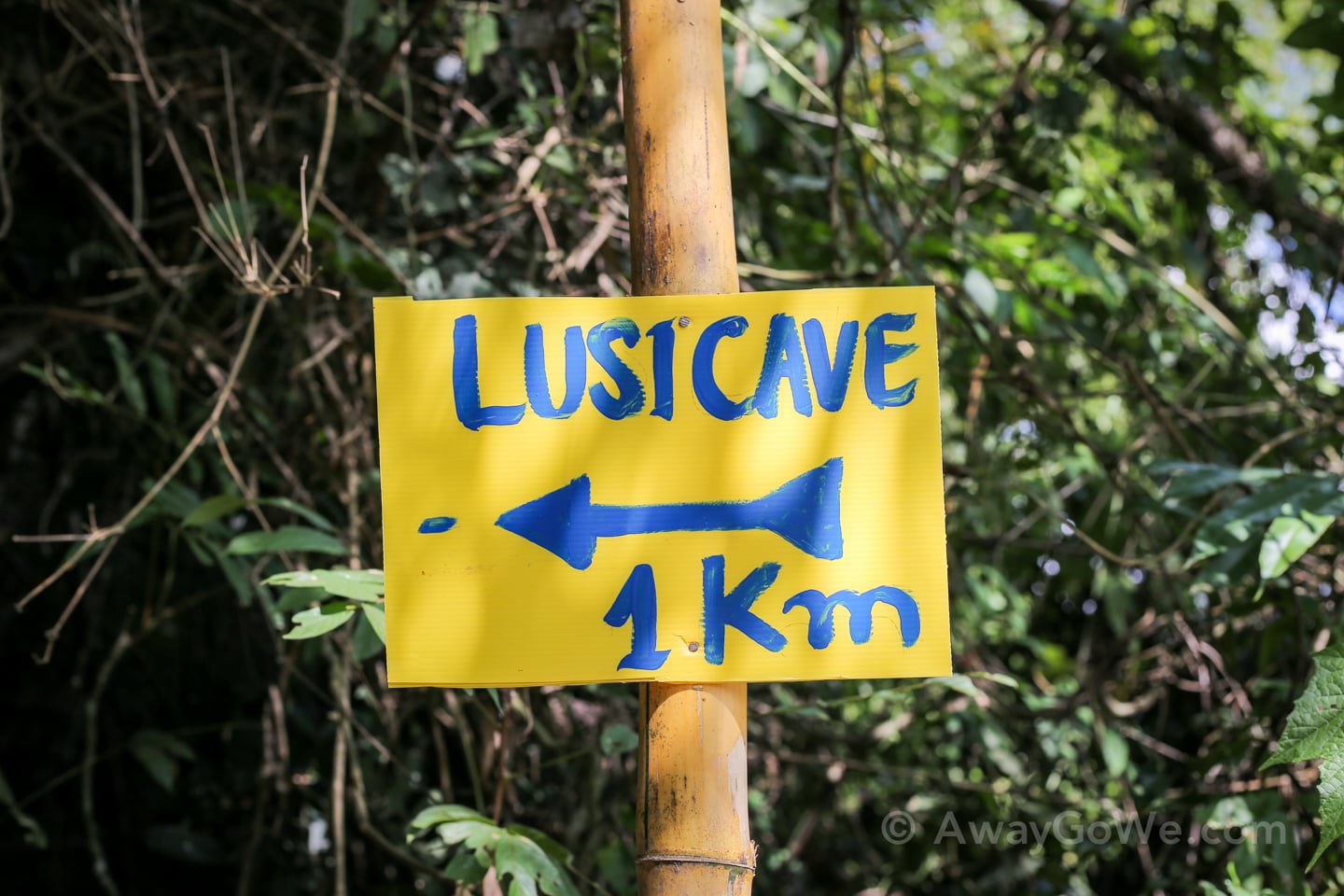
Ok, so that was not Lusi Cave, but another one. Foiled again, I thought. 1 km. Onward!
But not before we stop for this guy and five of his closest friends. Hello, Mr. Waterbuffalo.
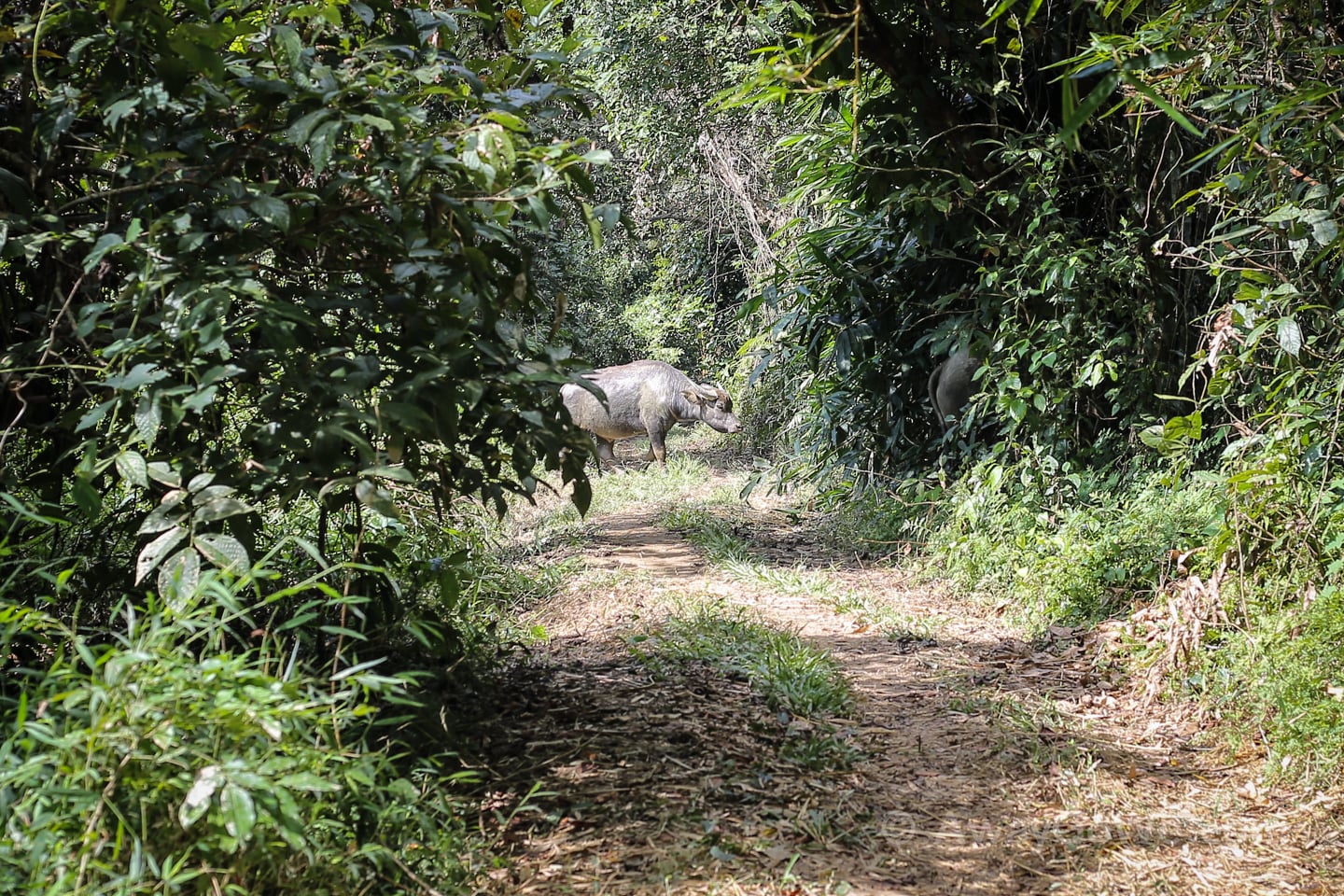
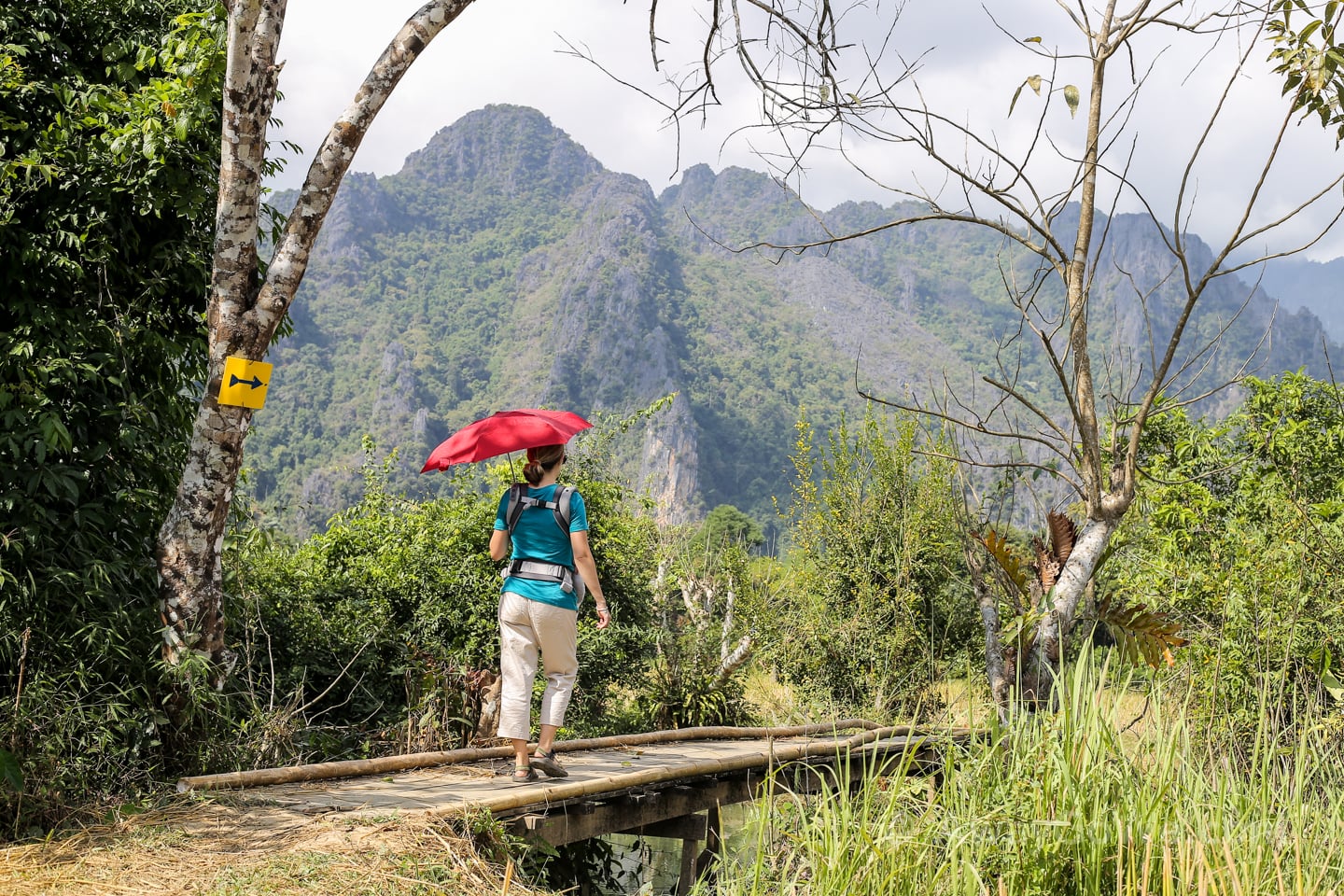
Deeper into the valley the path took us, and closer to the majestic karst formations we came.
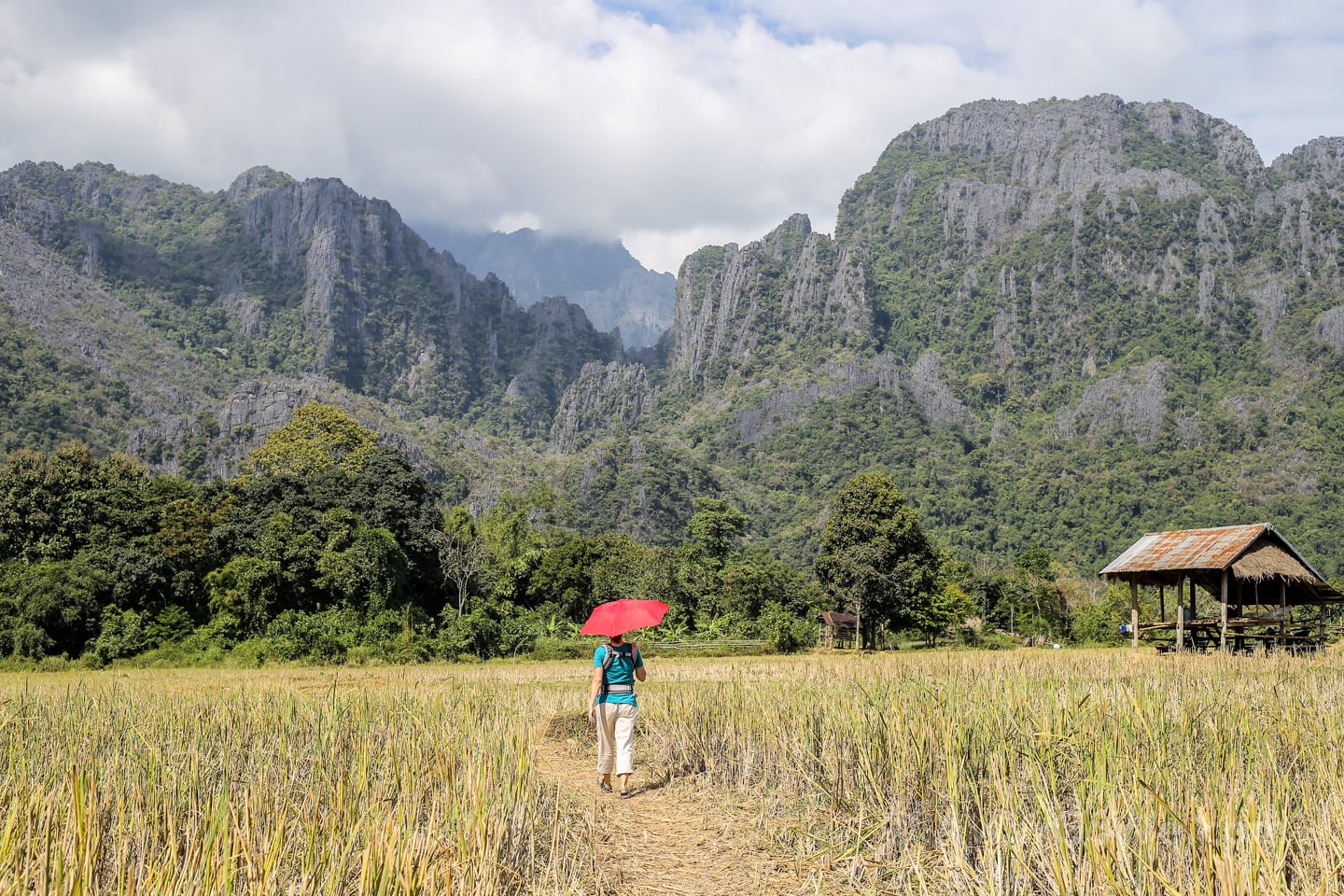
Then, back into even denser jungle, a welcome reprieve from the midday sun.
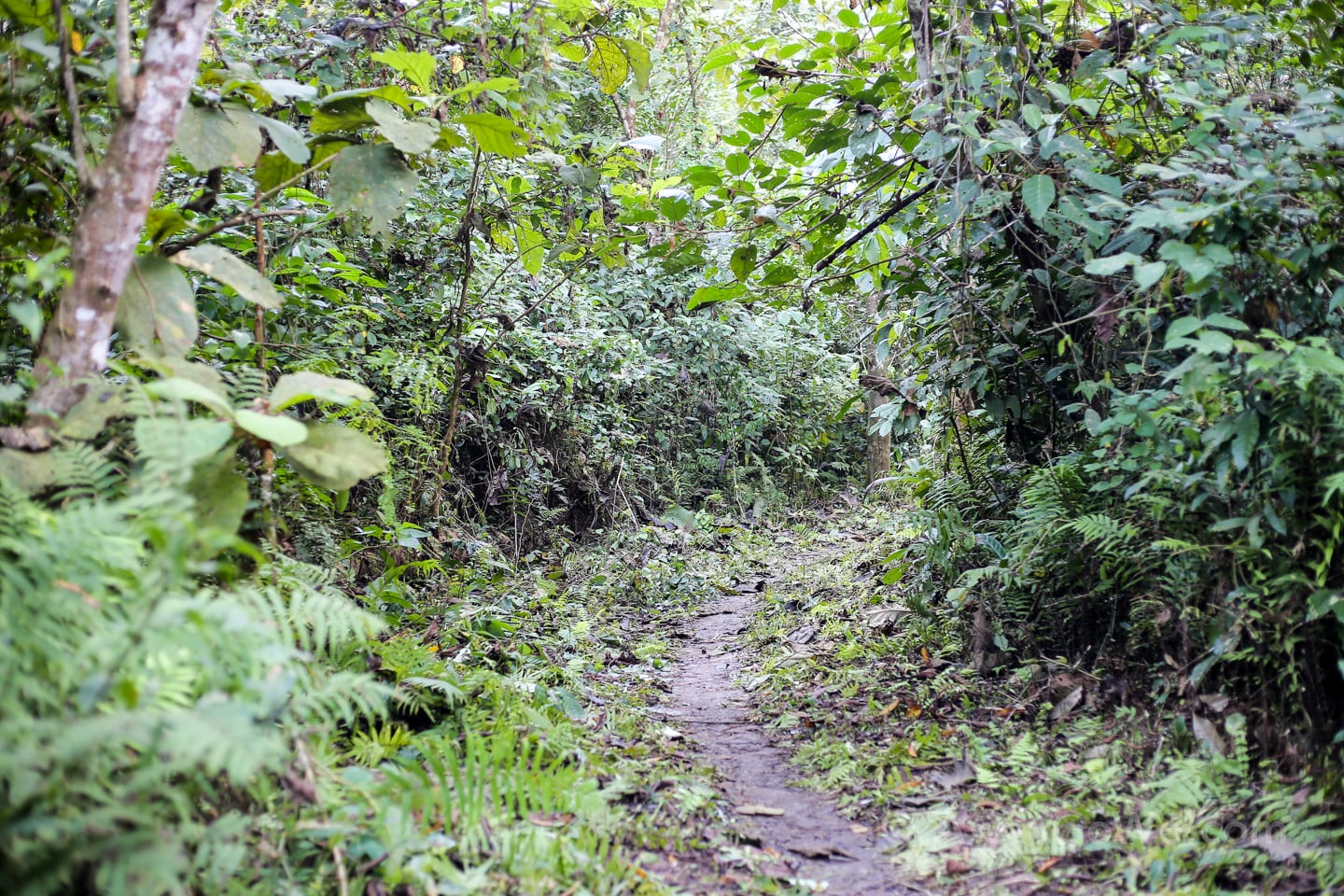
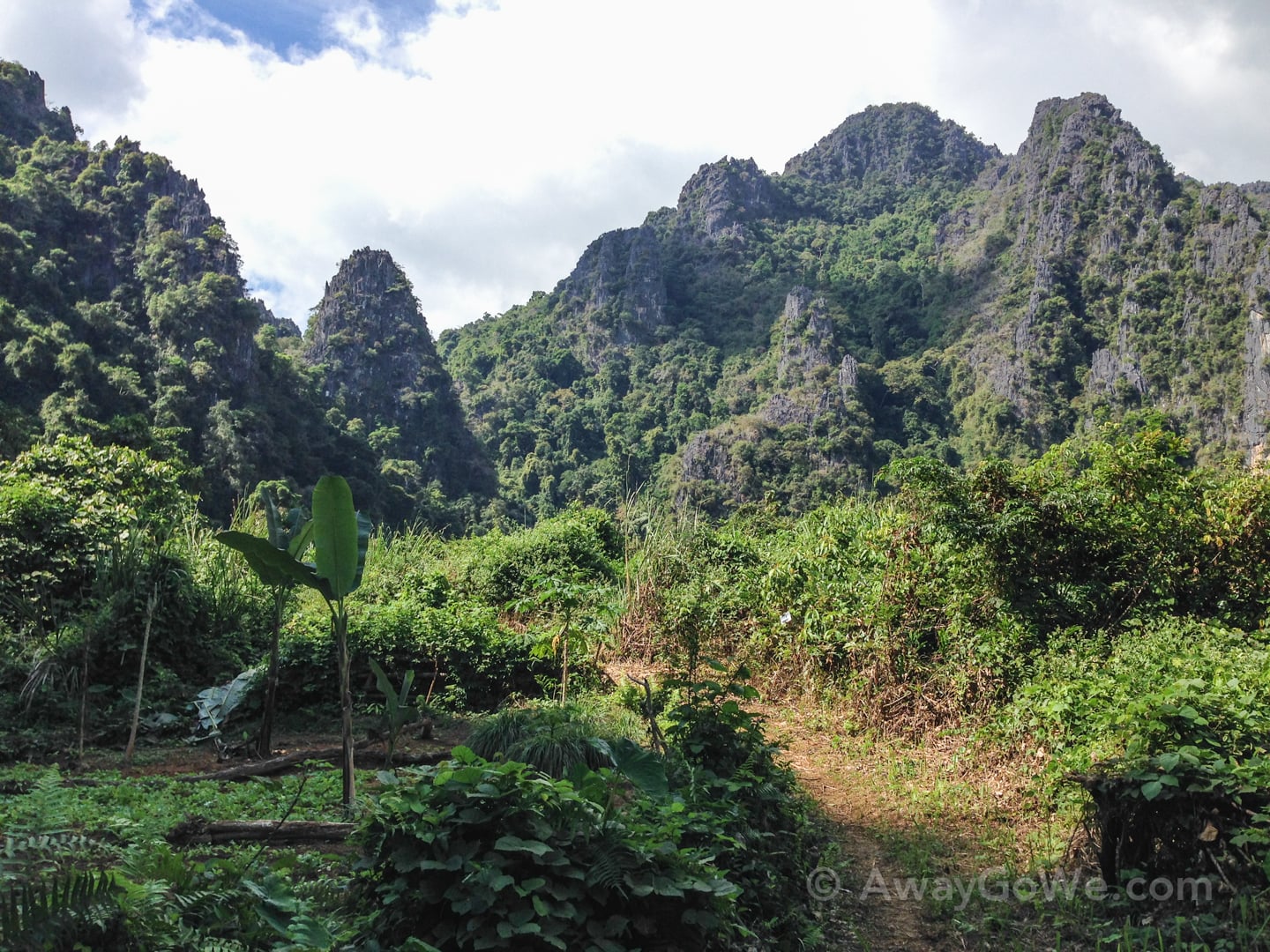
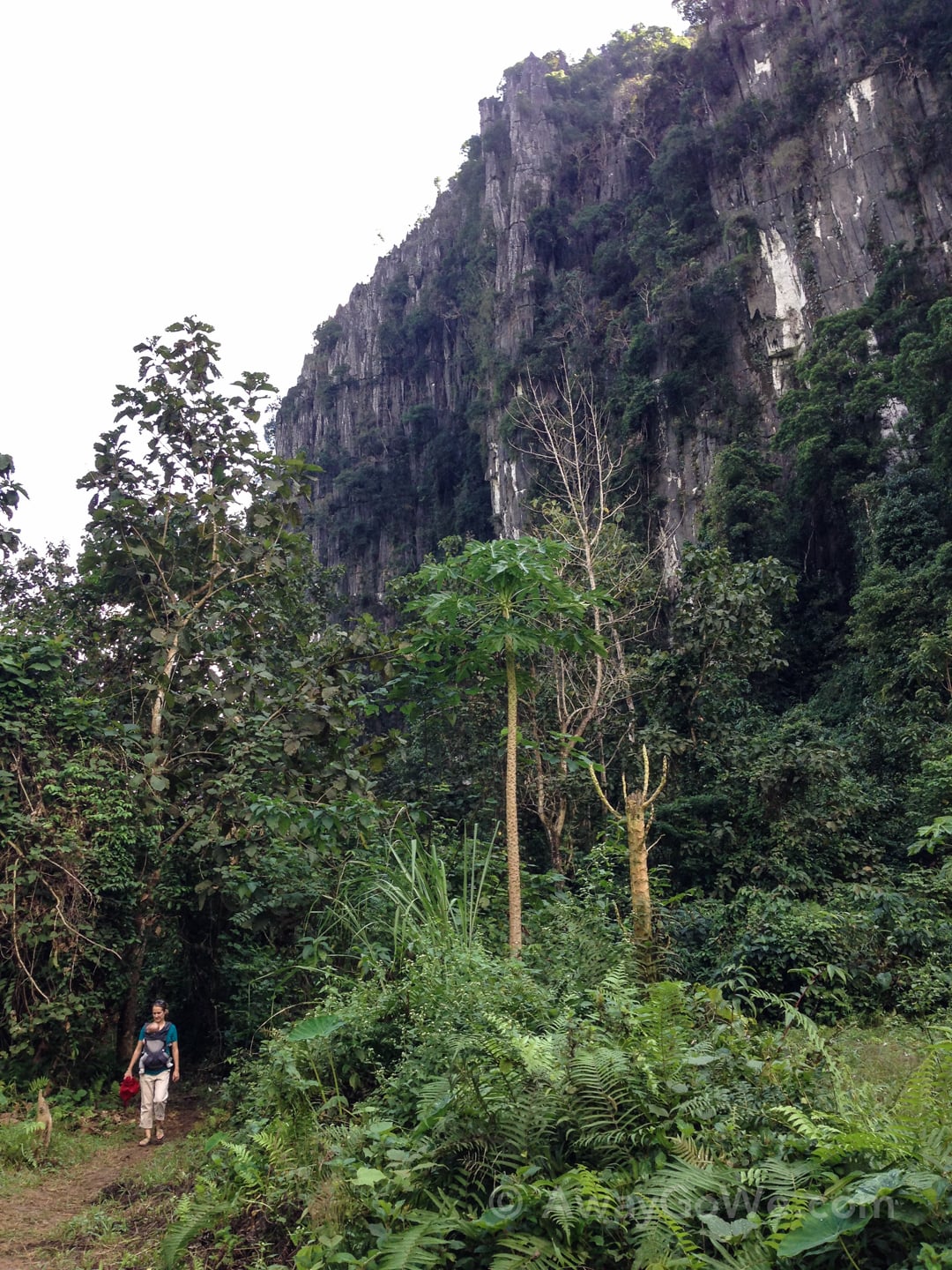
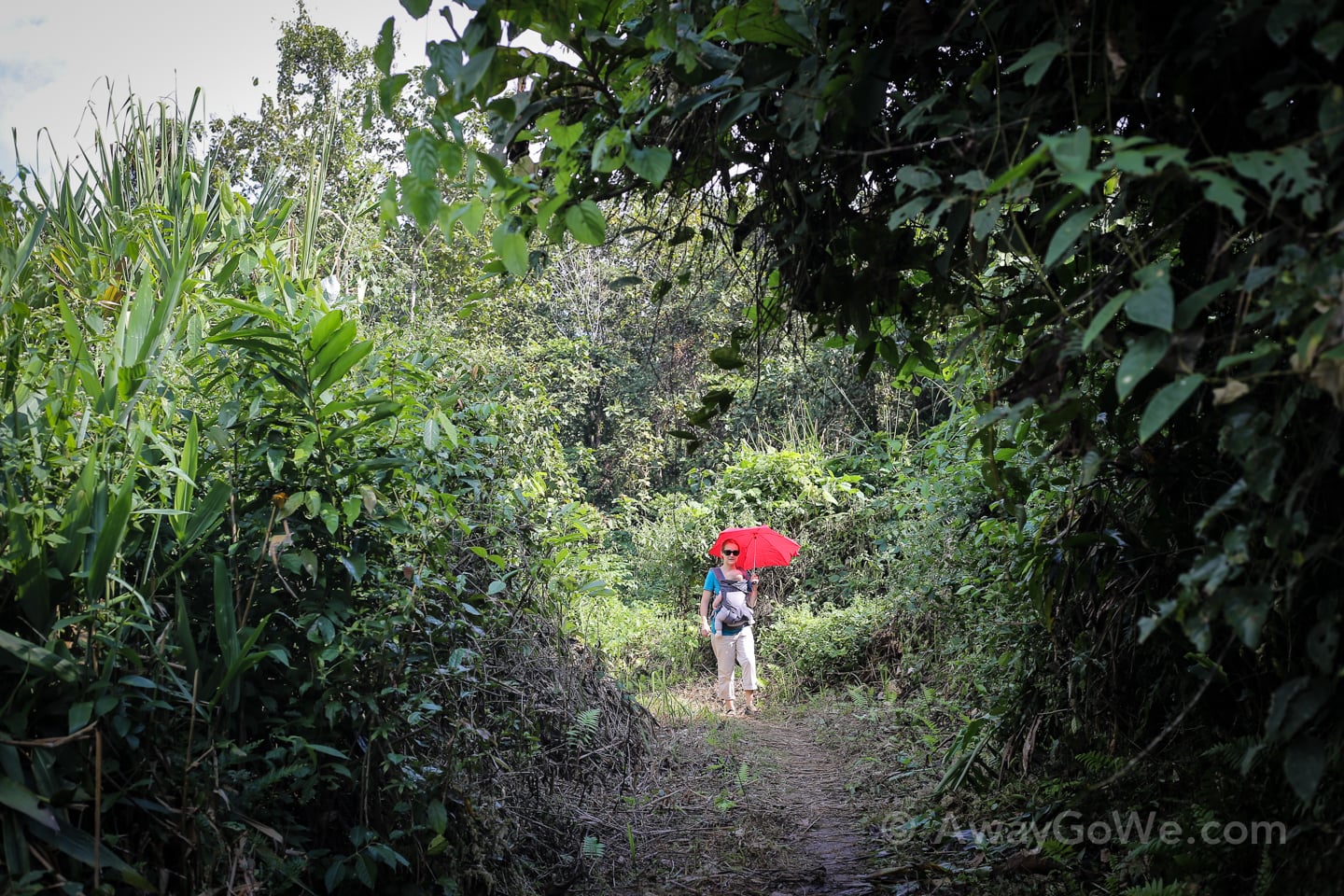
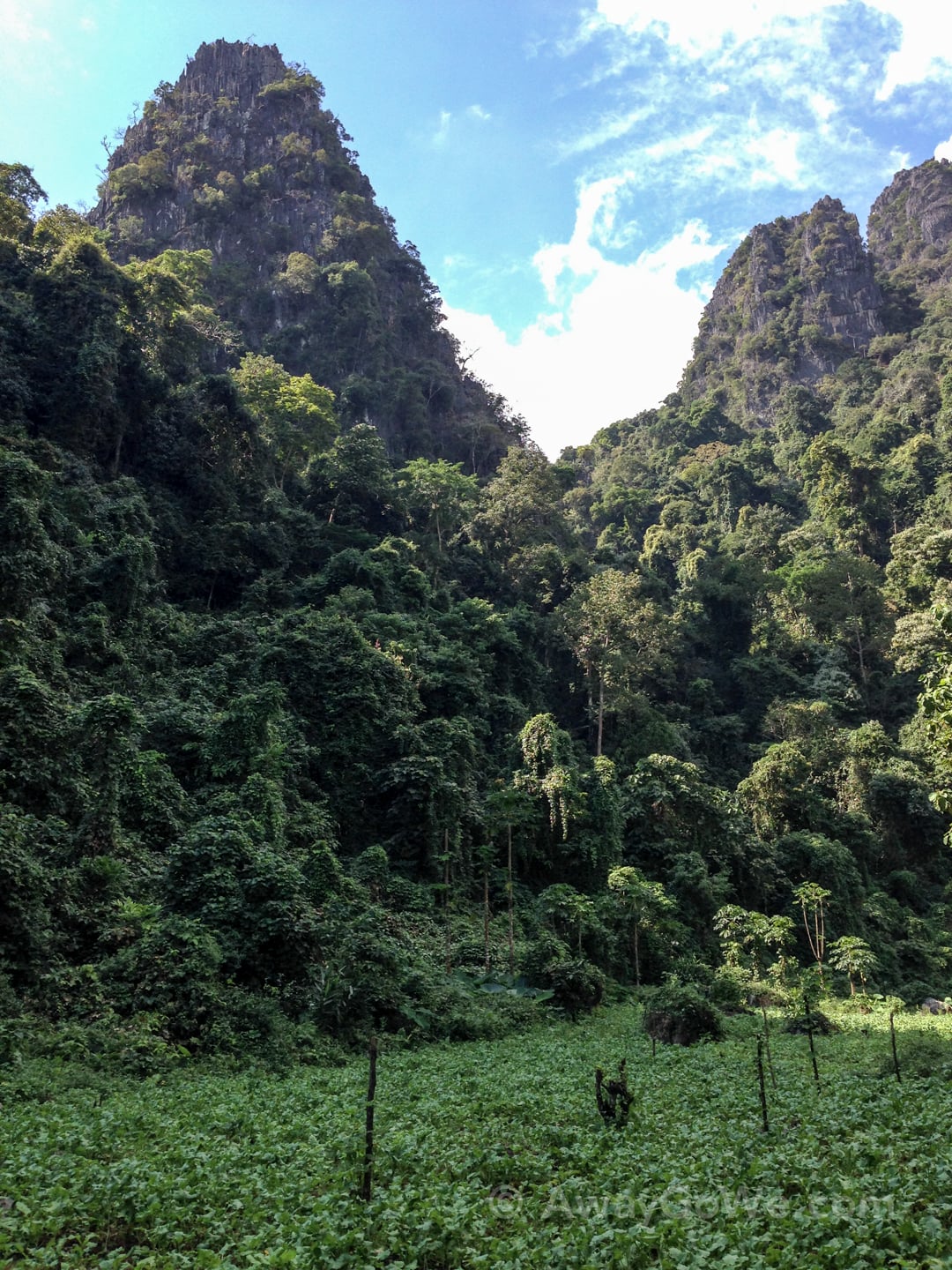
Finally, (after much closer to 2km than 1km) we reached Lusi Cave. Again, a set of rickety stairs led skyward, and again, I left Lori and Noe behind in the jungle. Ok, before I get hate-mail for leaving my wife and infant son alone in the jungle, both times there were local people milling about selling tickets and soda (and actually a resting area with bamboo seats, etc.) , so not as bad as it sounds. With that said, the flies were pretty ridiculous at the base of Lusi Cave — ferocious, man-eating flies that seemed to want to get friendly with anything and everything. If anything, I did feel a bit guilty about leaving them behind with that to deal with, but they survived.
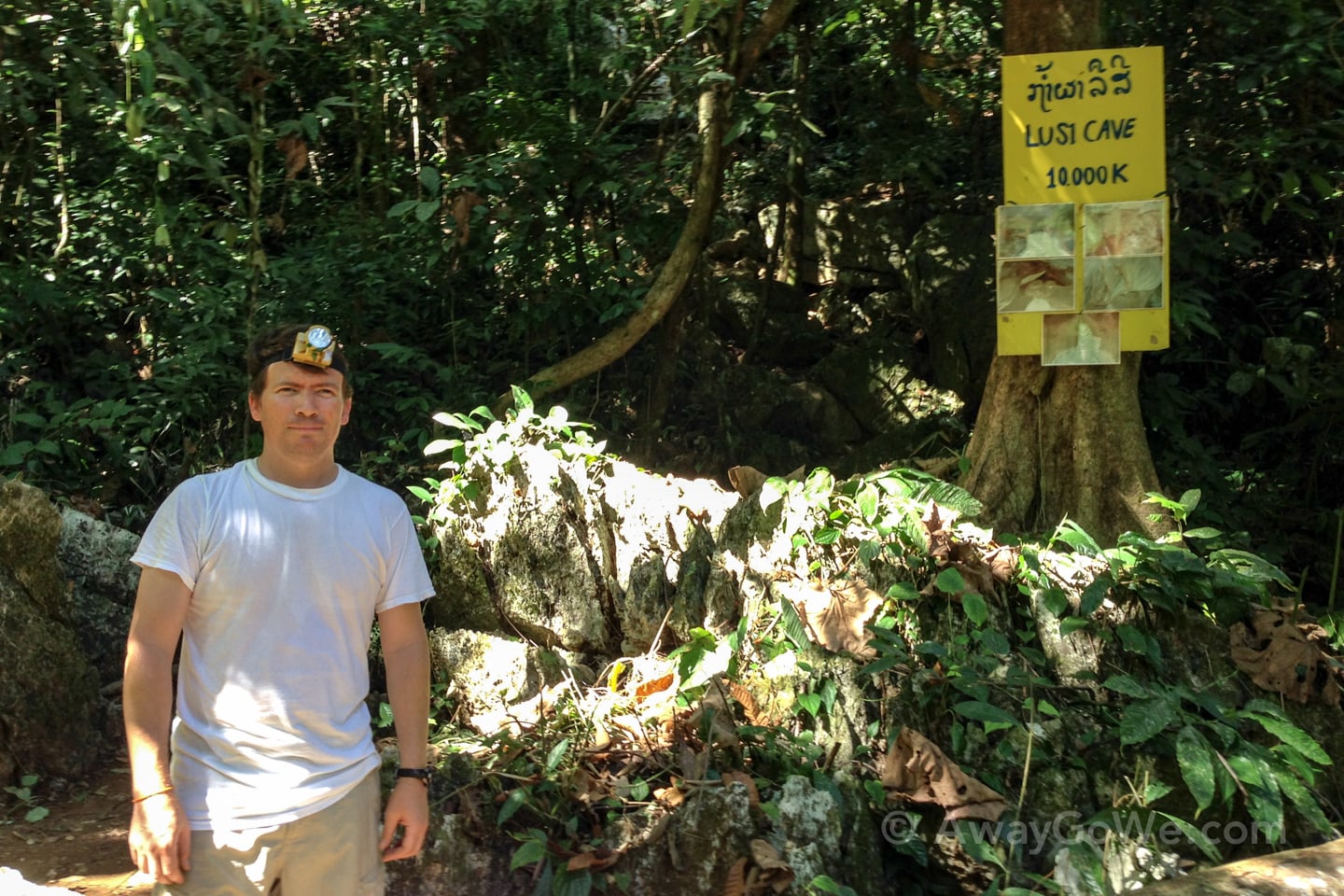
Up we go!
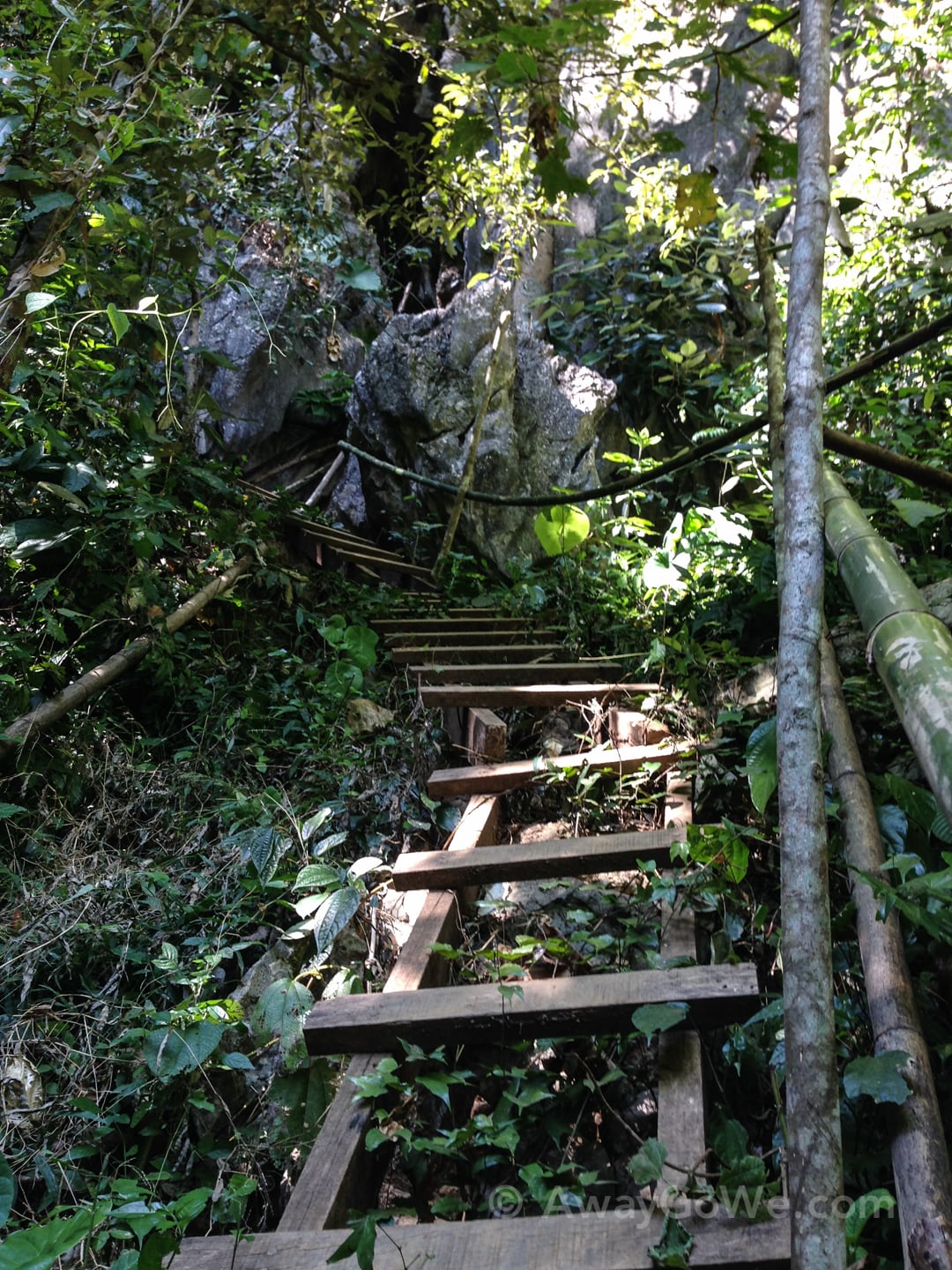
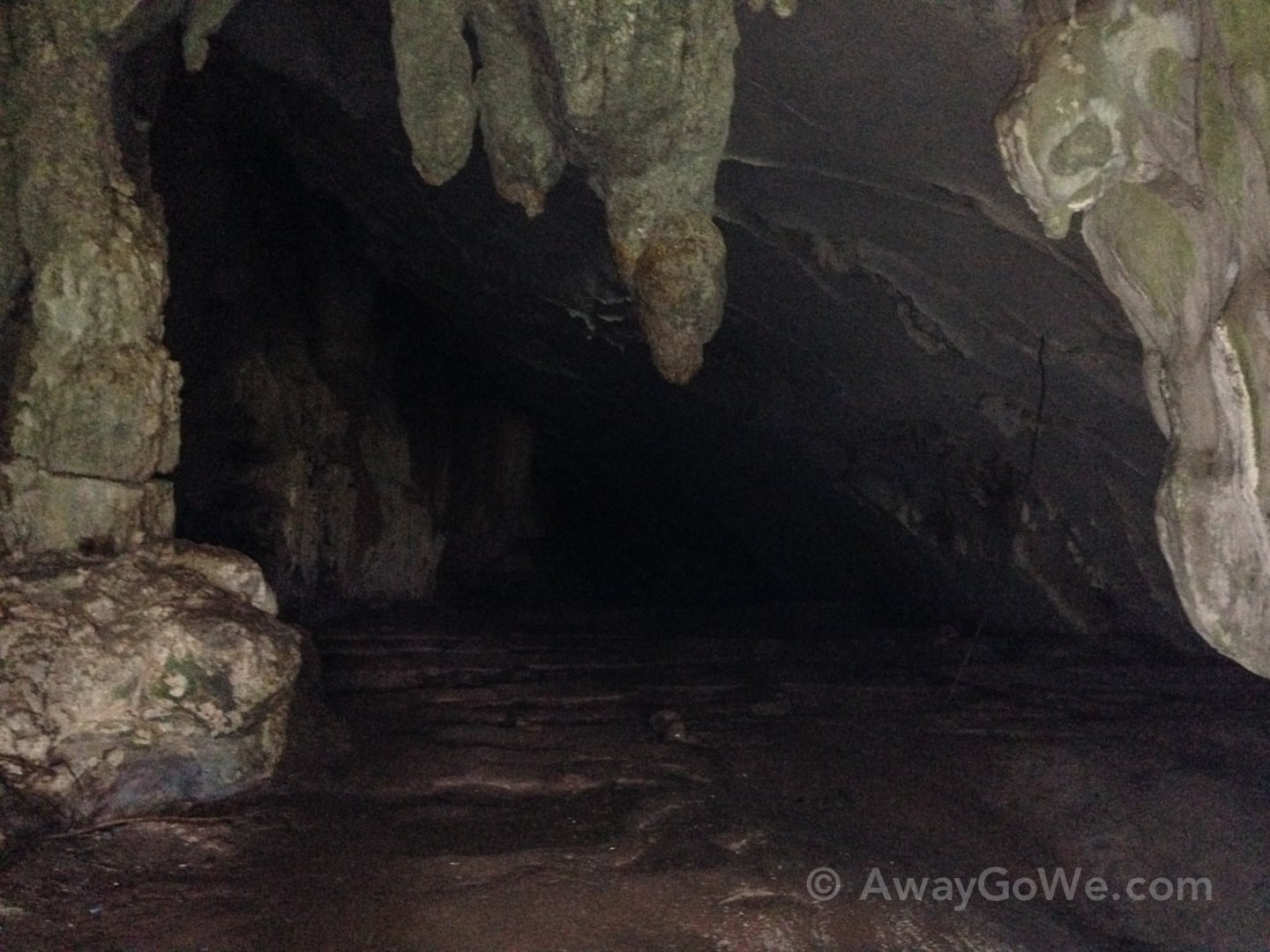
I have to admit, Lusi cave was pretty cool. They lend you a headlamp when you buy your ticket, and it’s easy to see why. The headlamp did it’s job, but not much beyond that.
The first chamber of the cave is longer than it is wide, with a low ceiling. After ascending a wooden ladder, you emerge into a larger chamber. I was alone in the cave the entire time, which was both unsettling and a peaceful at the same time.
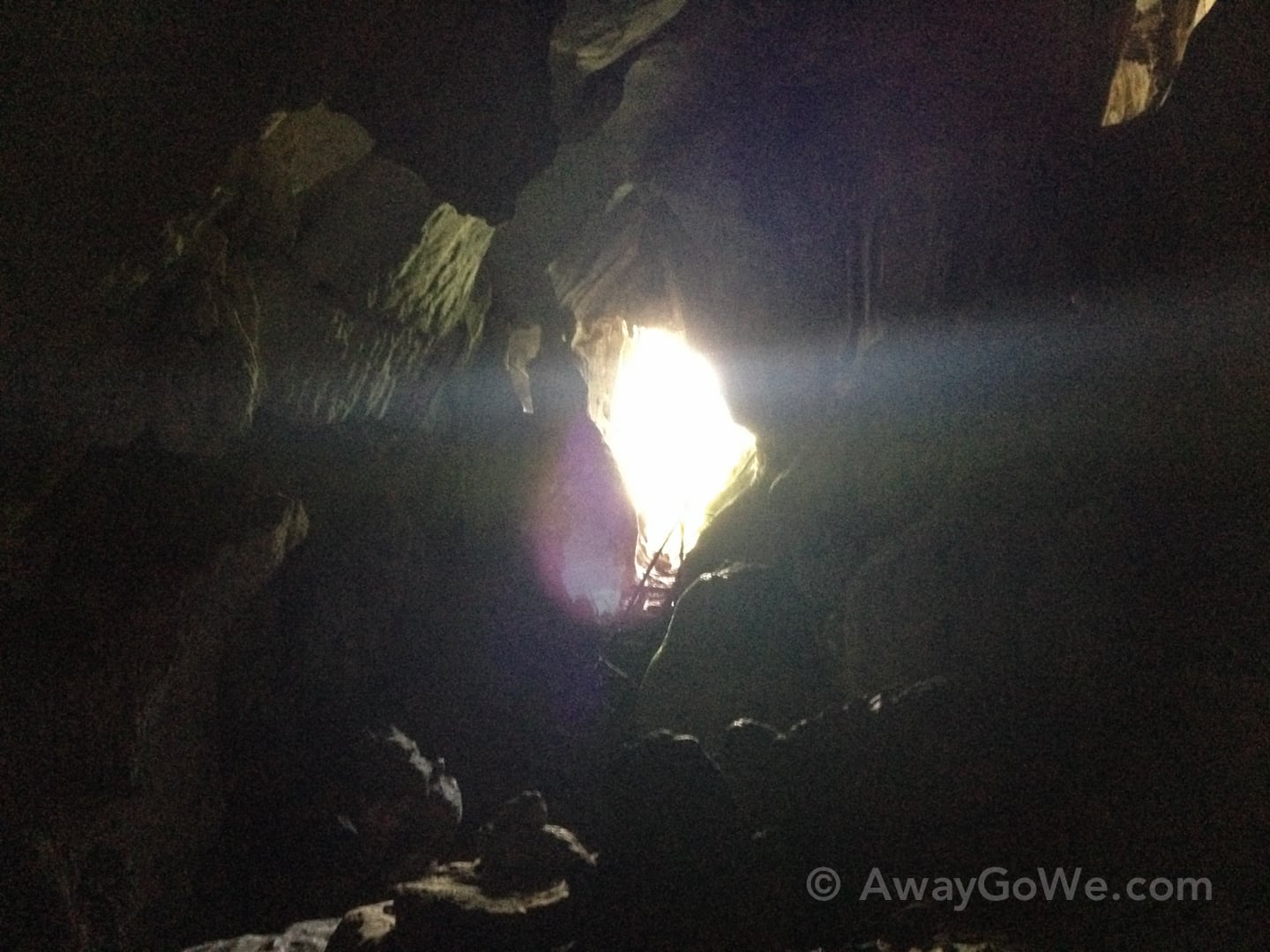
Lusi cave is known for it’s large swimming holes deep inside the cave. This time of year, however, there wasn’t a drop of water to be found. Good thing, since I had left my swimsuit behind.
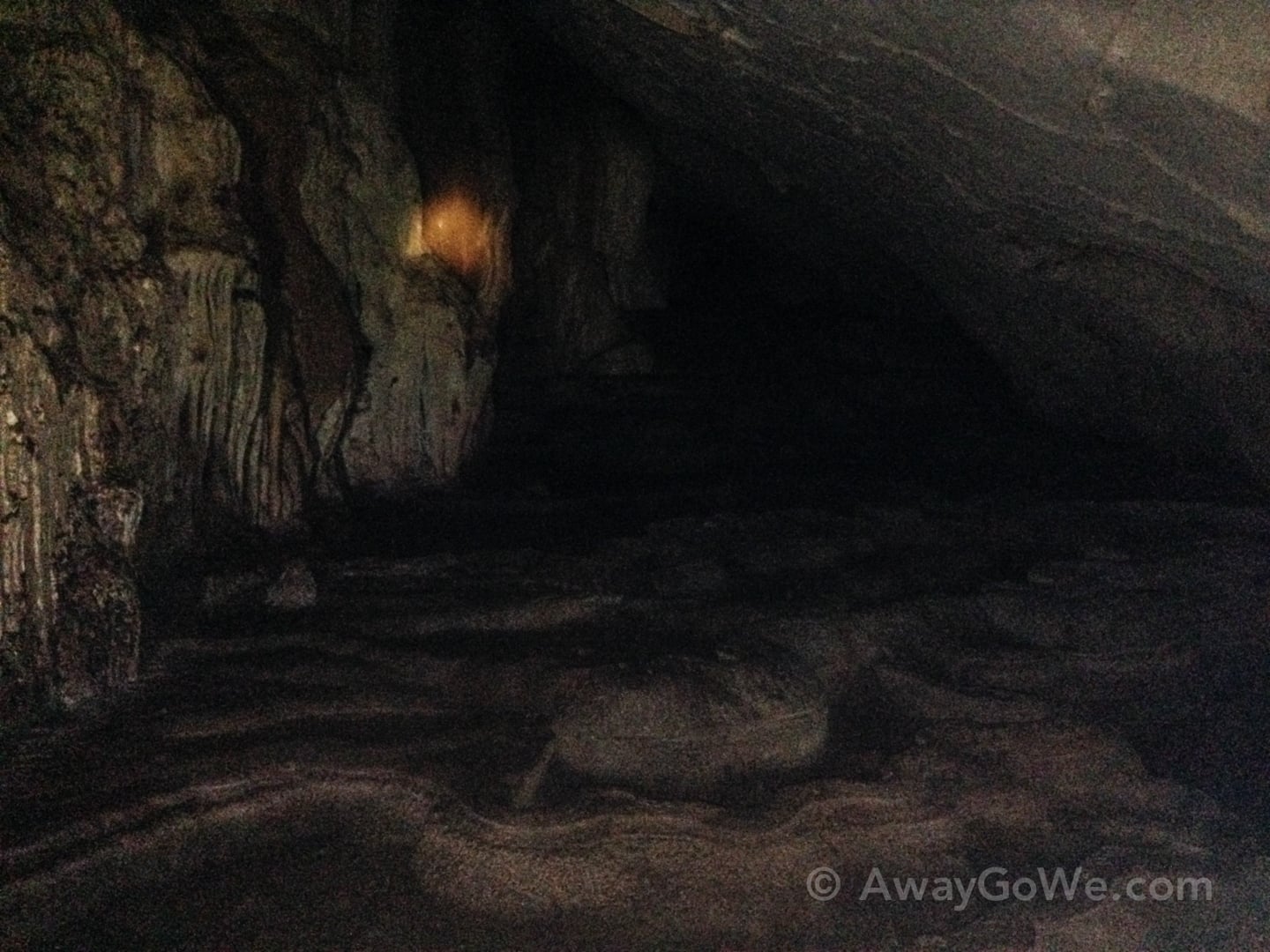
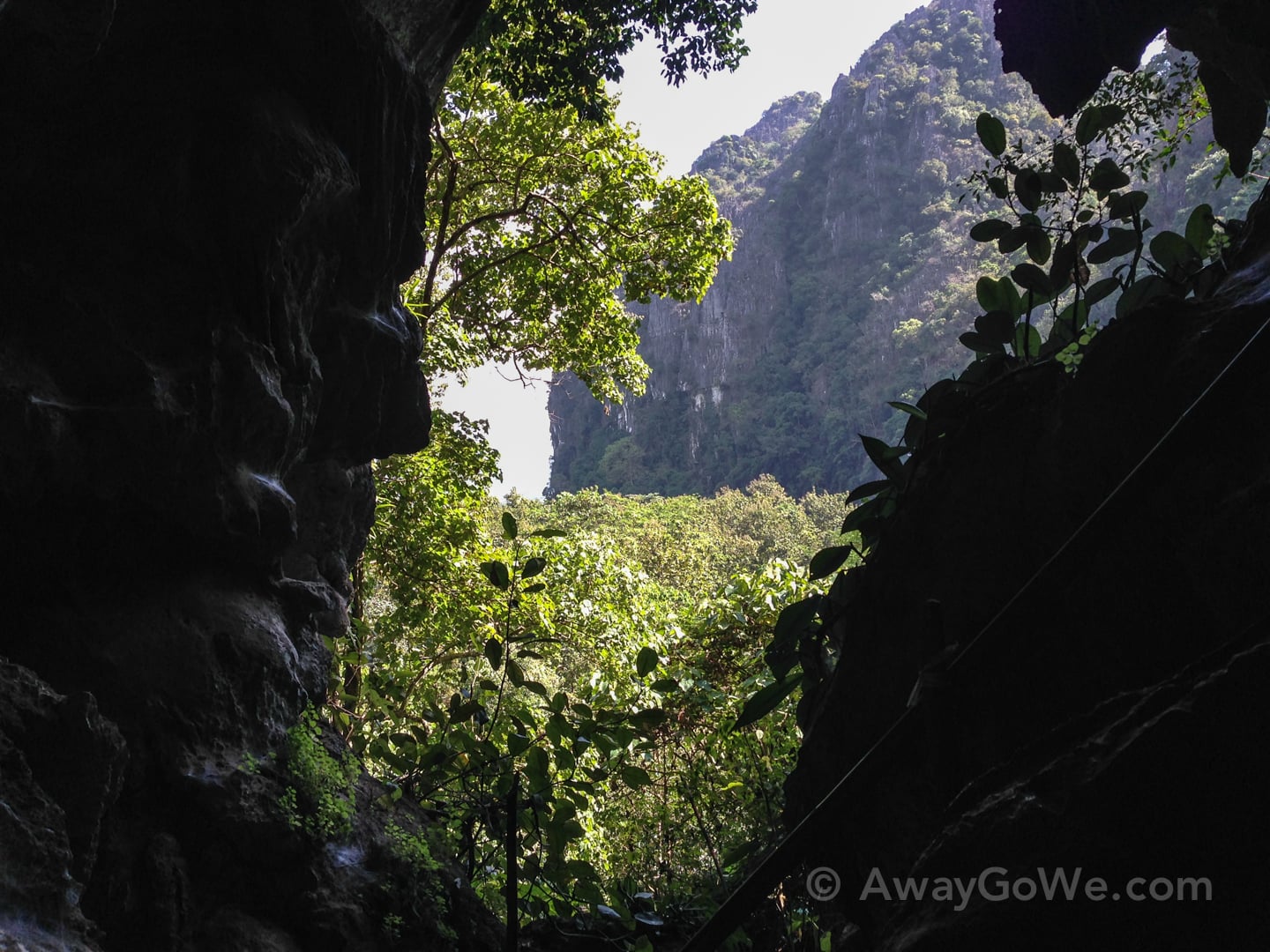
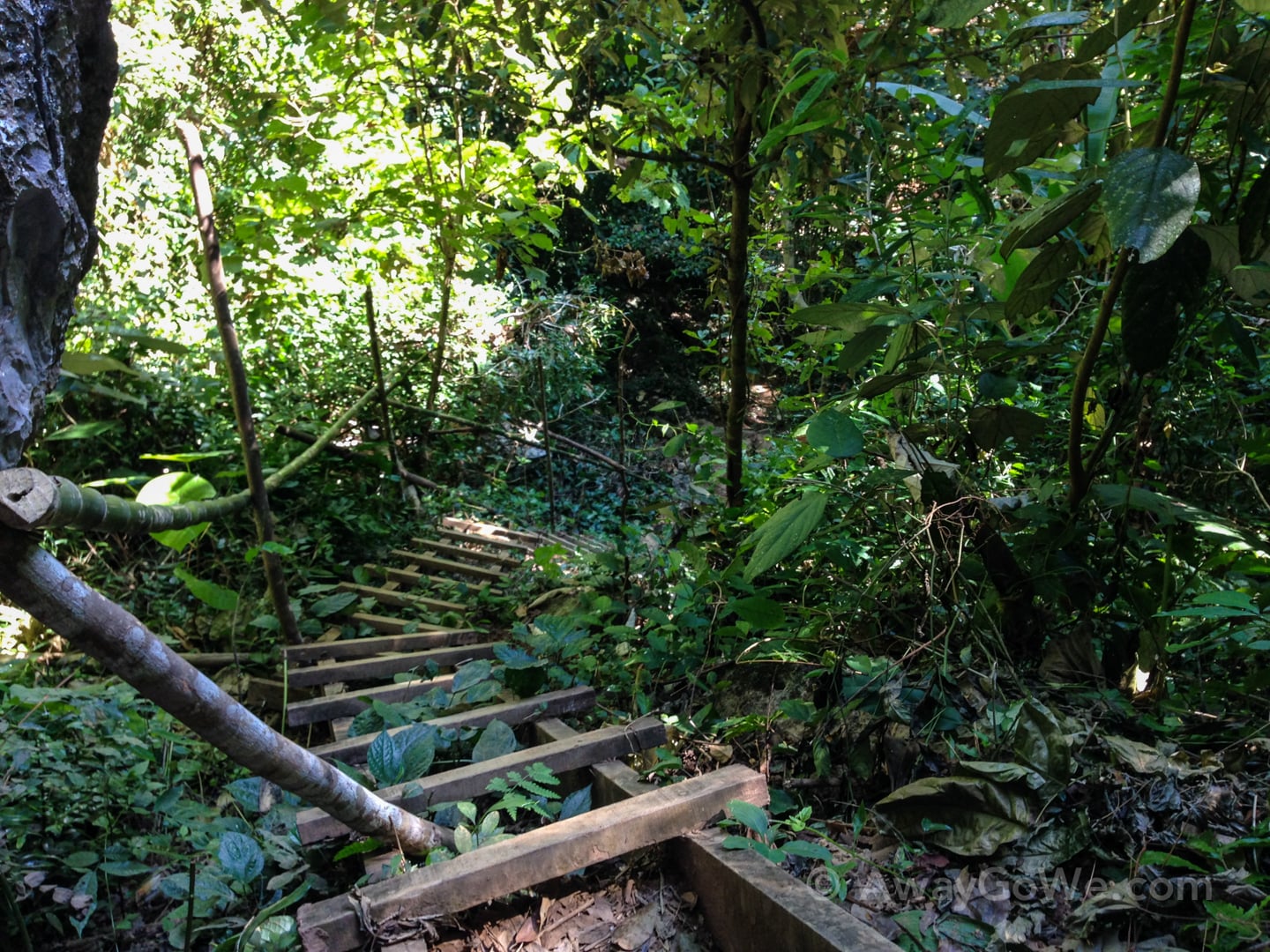
Noe loves jungle hikes. But then again, who wouldn’t when they have someone else to carry and shade them the whole way.
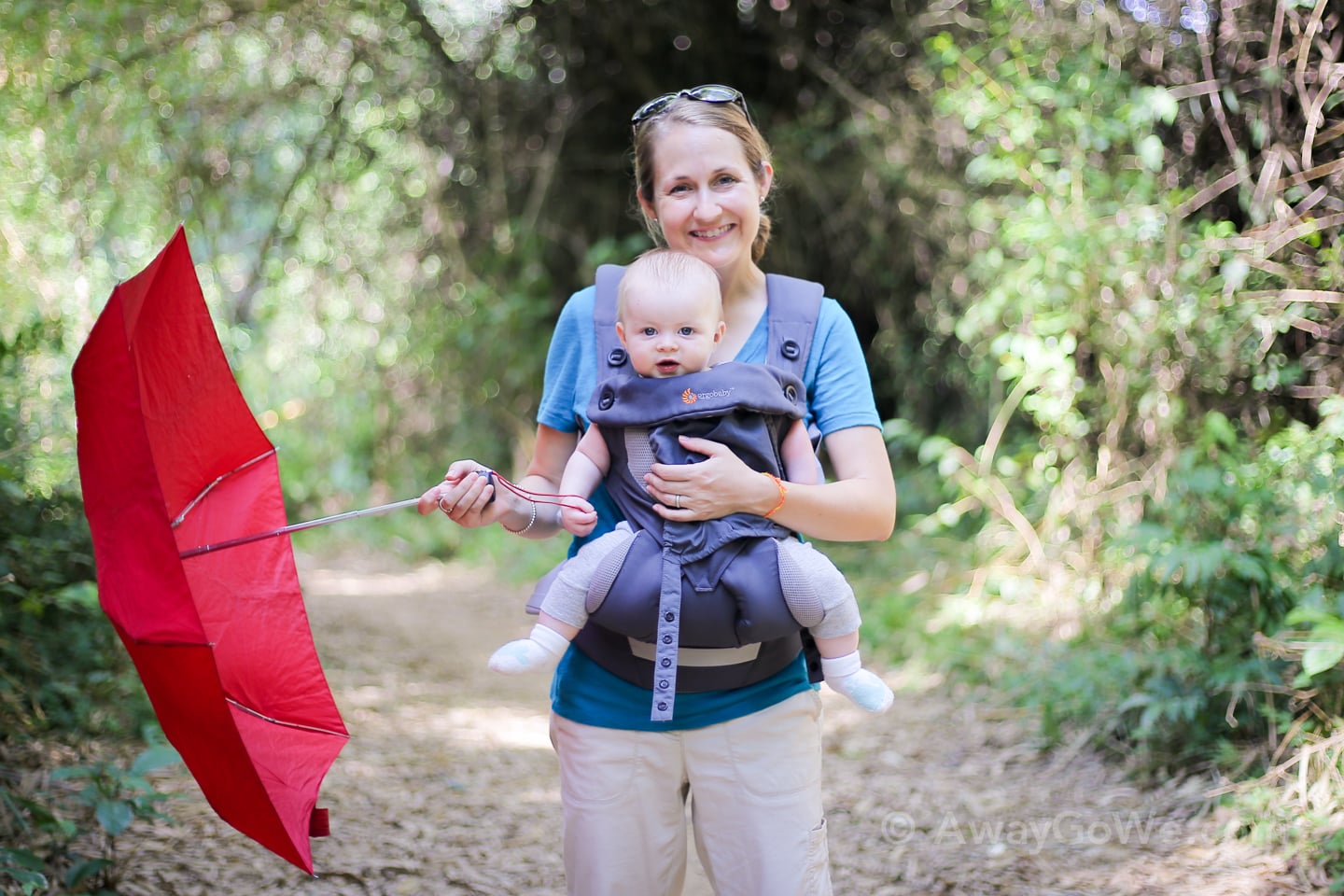
The view of Vang Vieng’s changing skyline heading back into town.
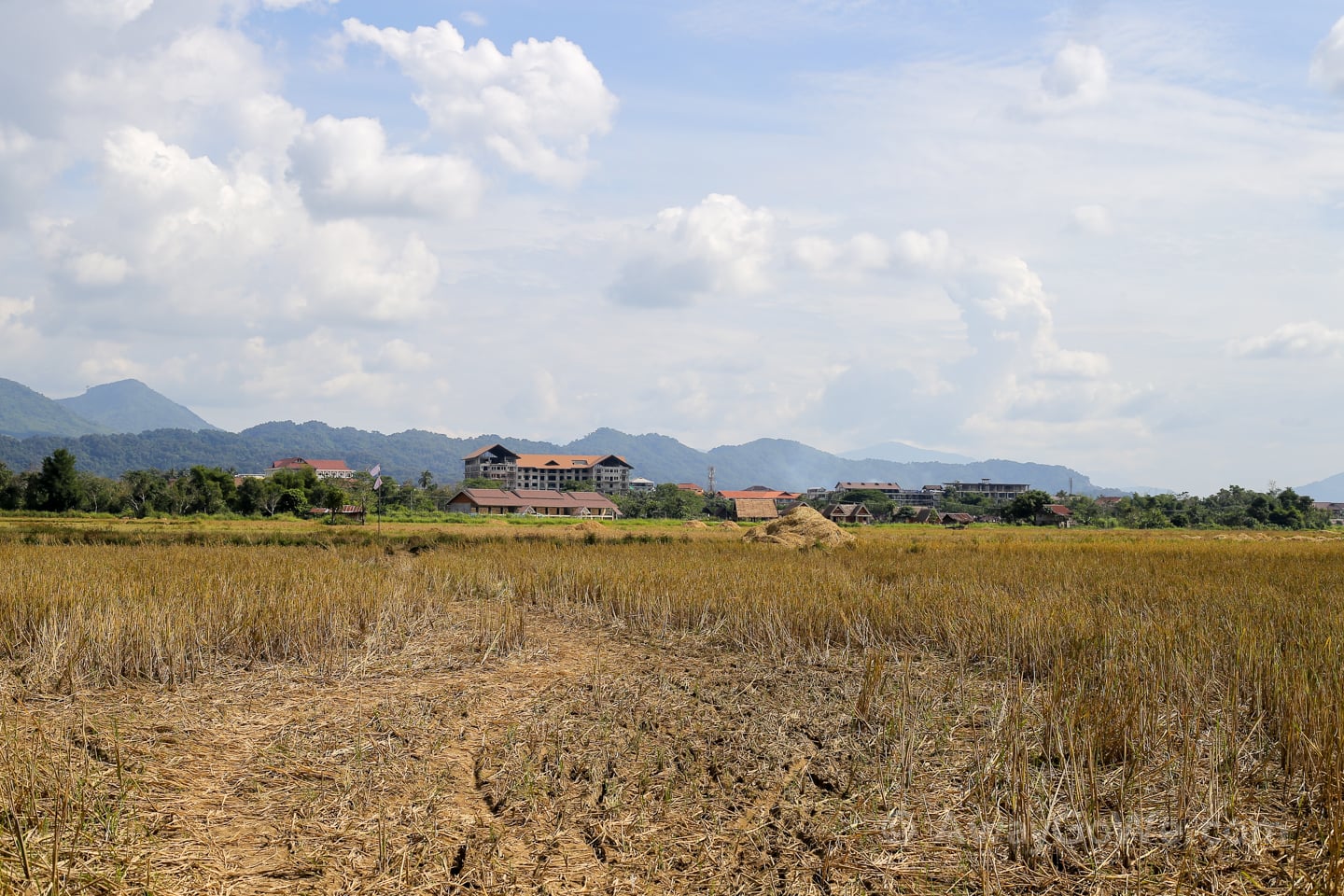
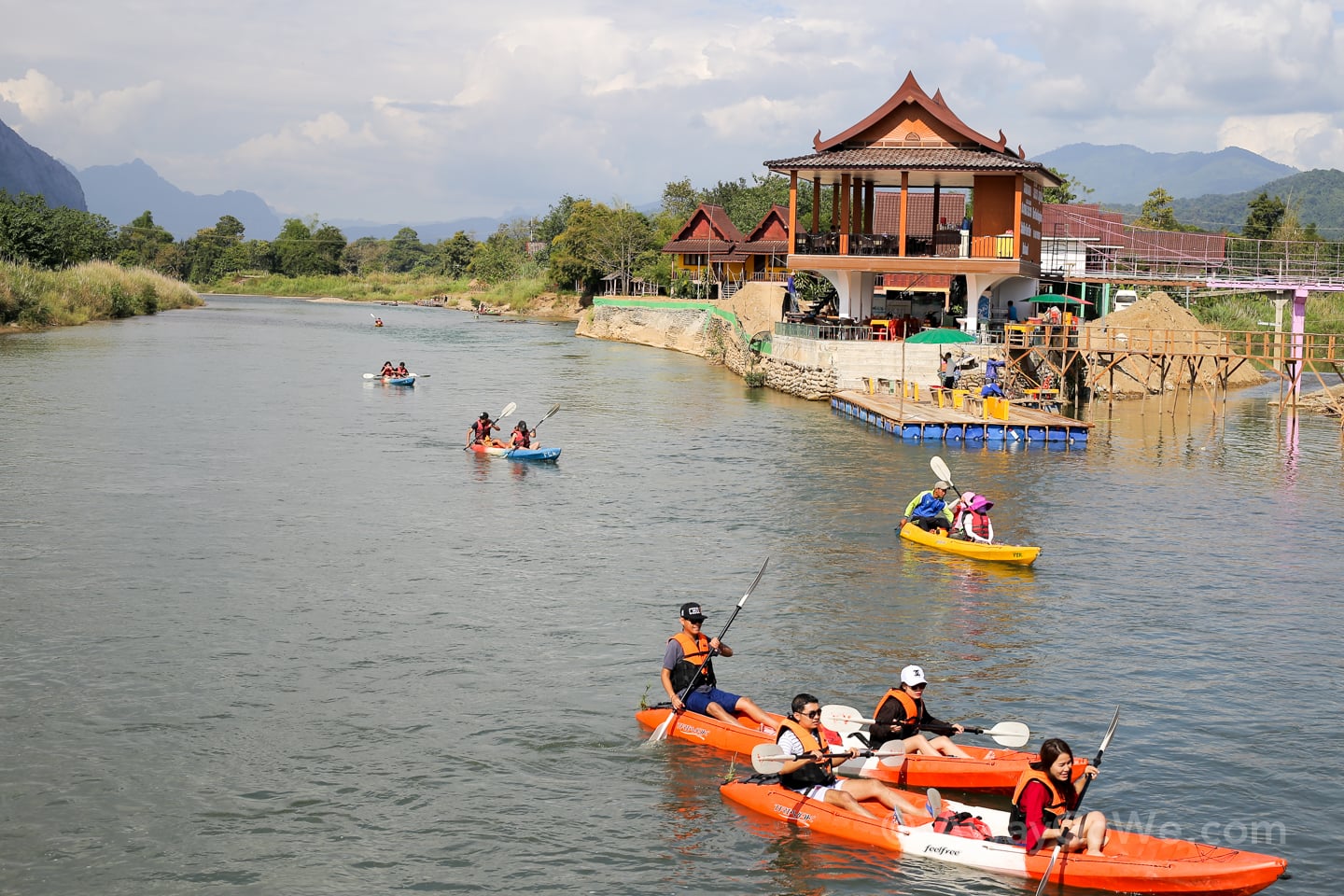
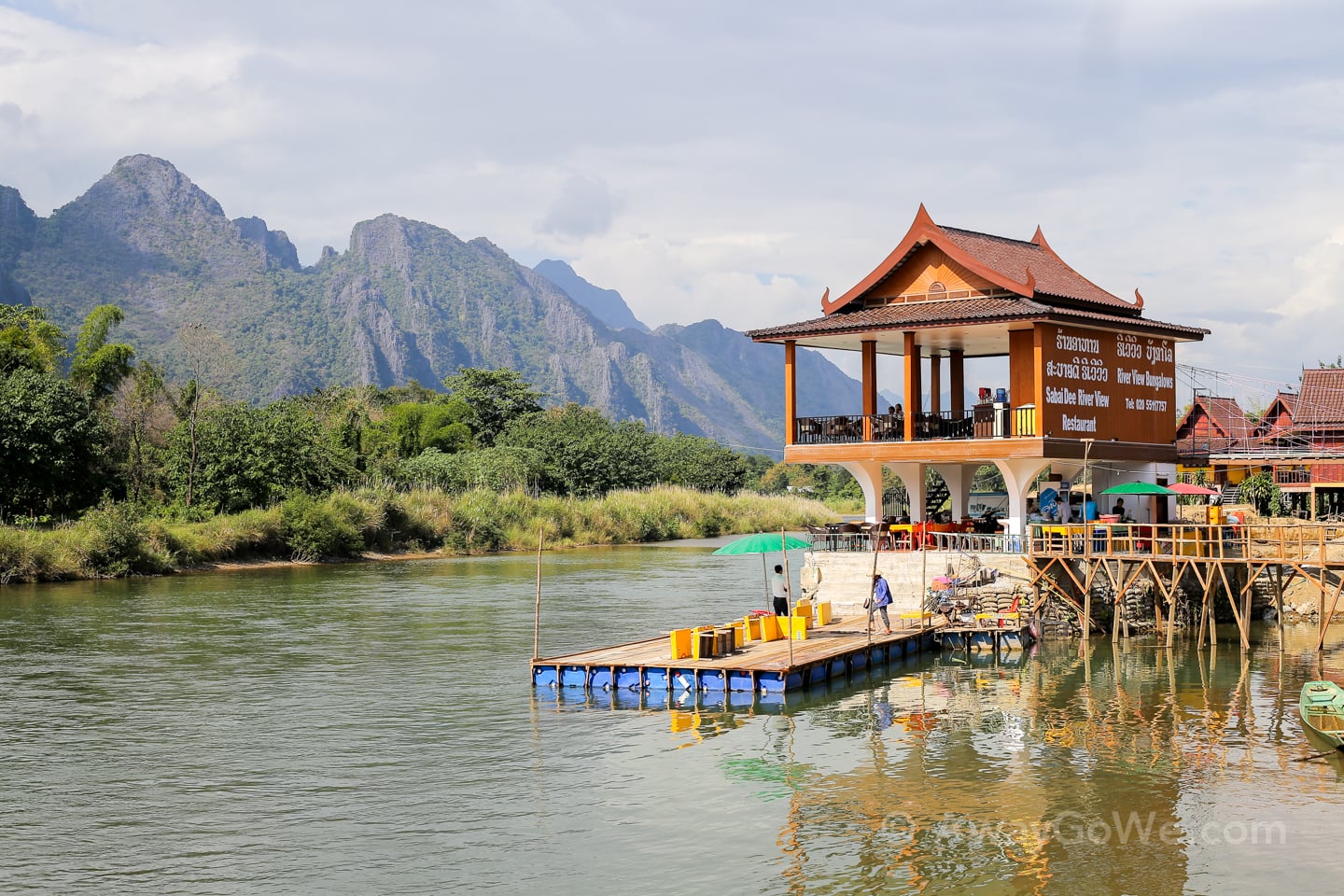
Pizza sounded good for lunch. This place, just up from the bamboo bridge had pizza, and comfy sitting areas, which are great for Noe, so done deal.
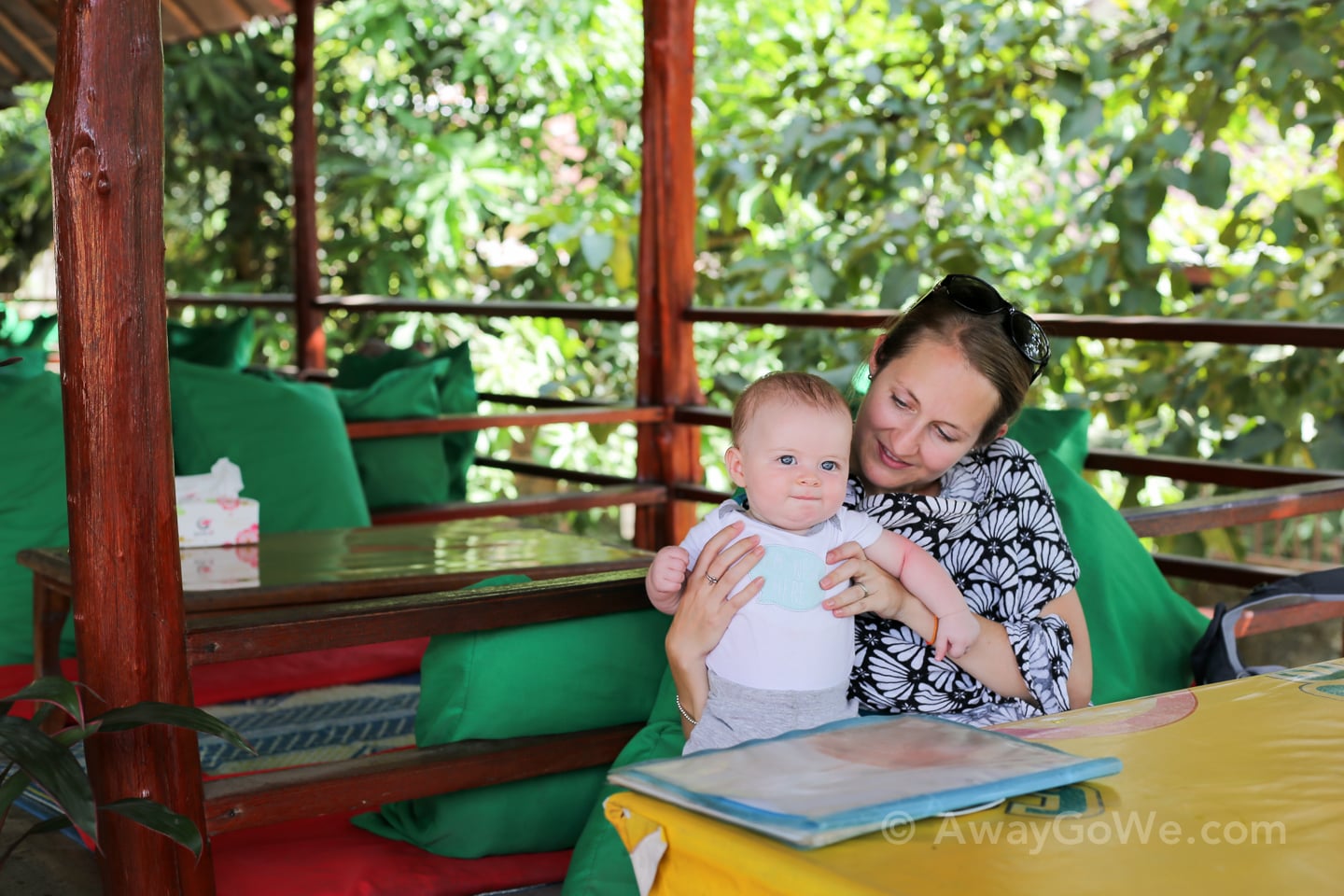
Noe, coming up for air during a feeding.
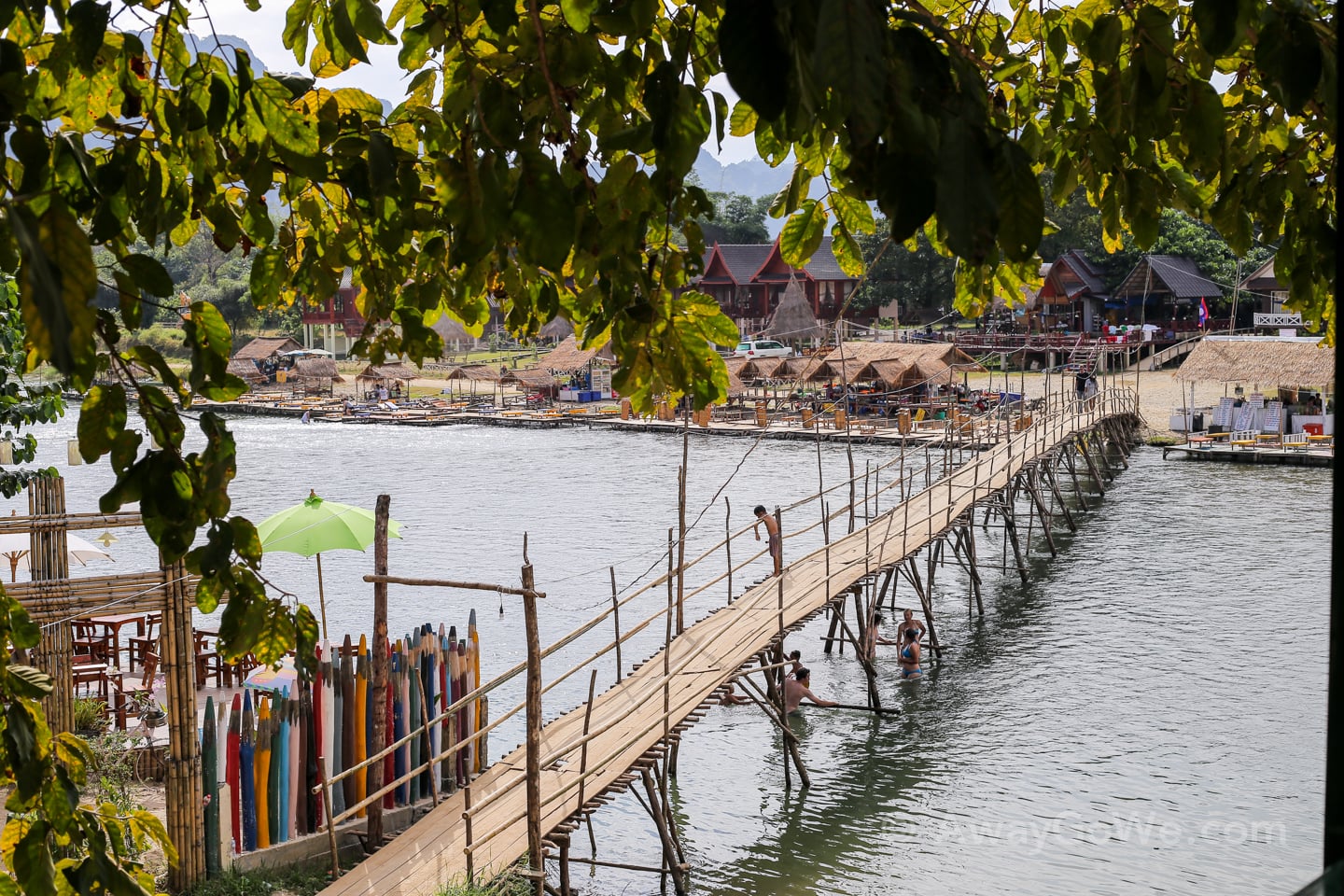
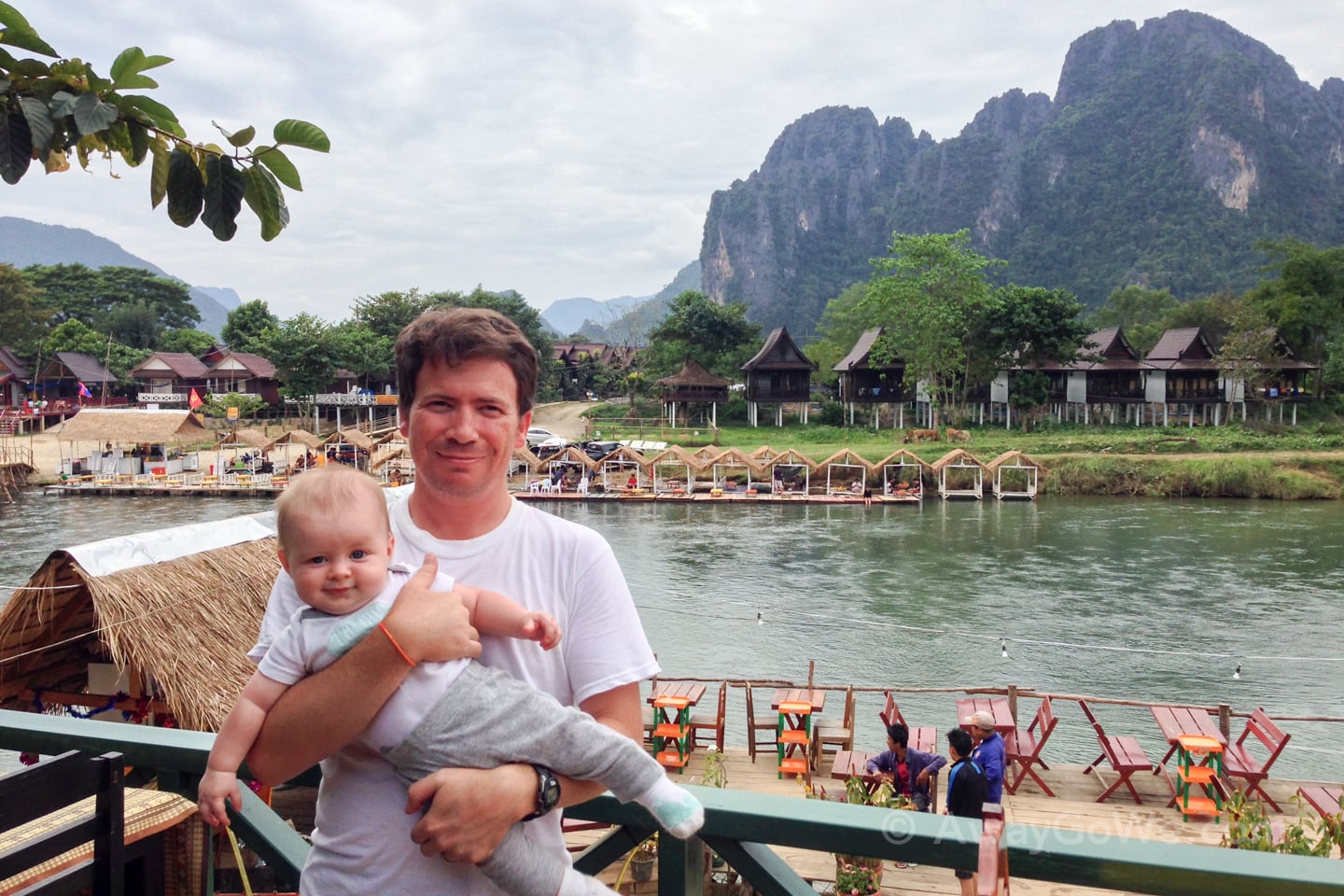
Apparently, my son has already mastered my picture-taking smile-smirk. Lori had a lot of fun with that one.
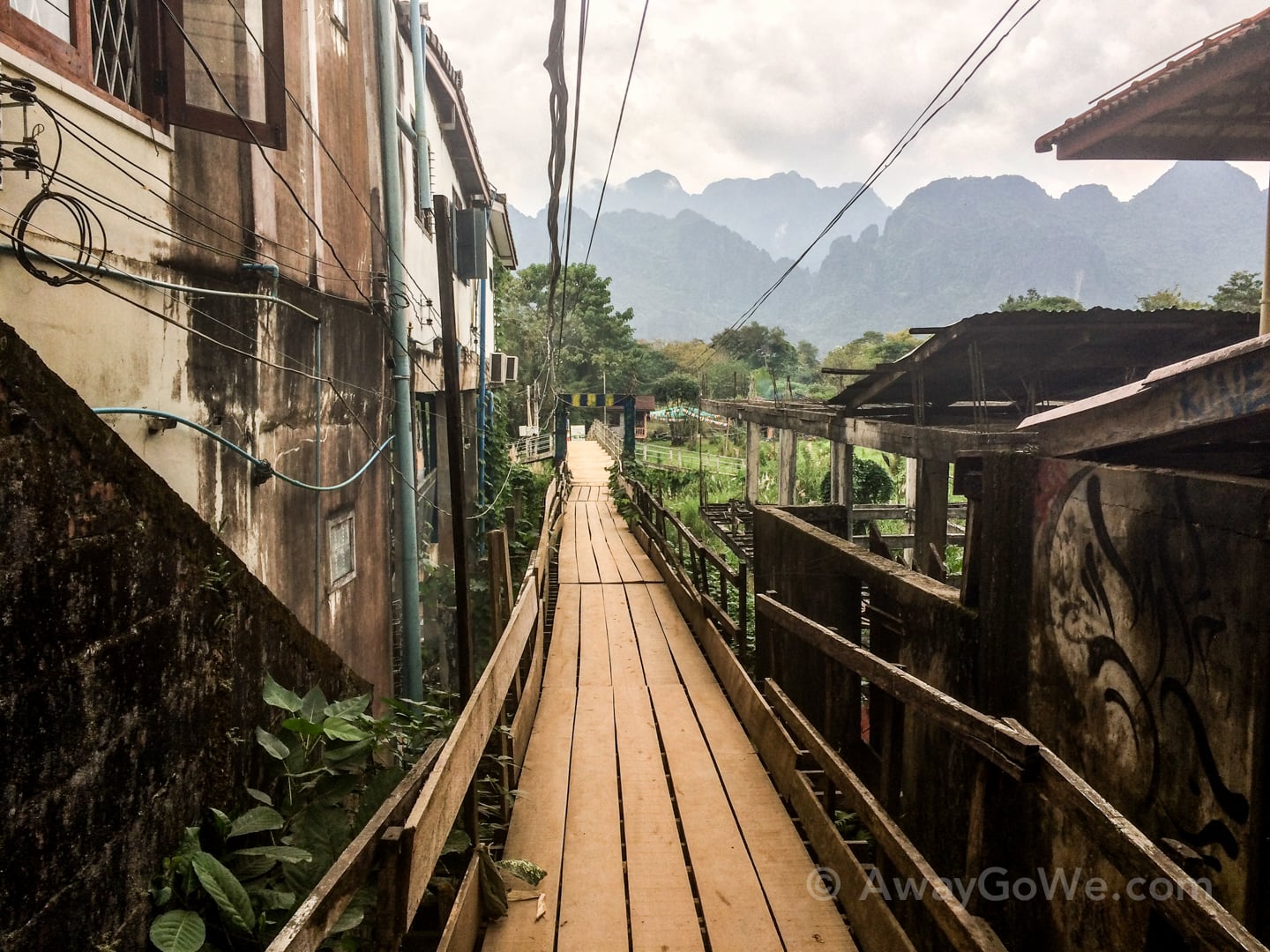
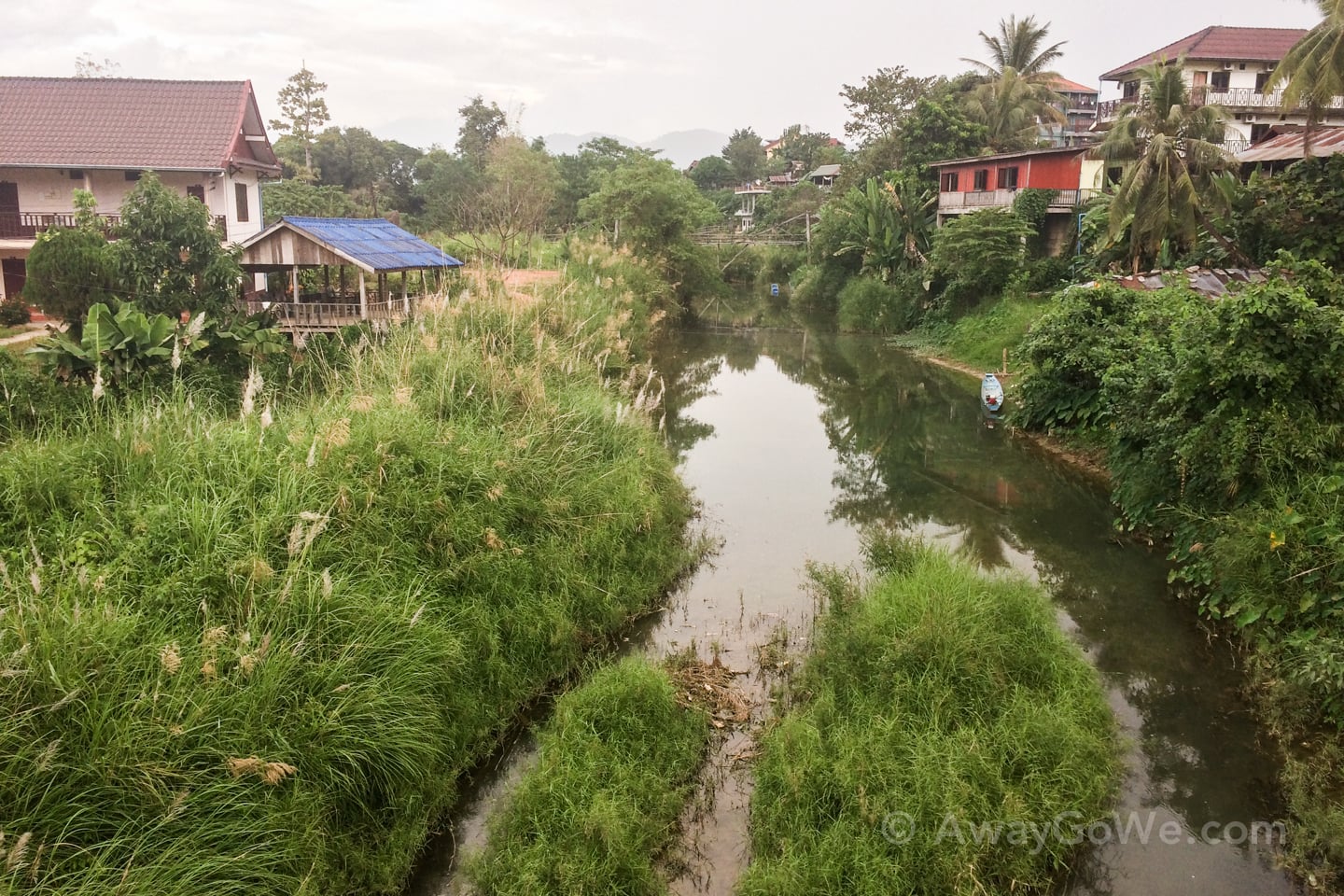
It was getting to be that time, so Lori and I headed back to the party island…again. We felt like trying something new besides Smile Beach Bar. This sign for “The Island Bar” caught our eye on the way and sounded intriguing.
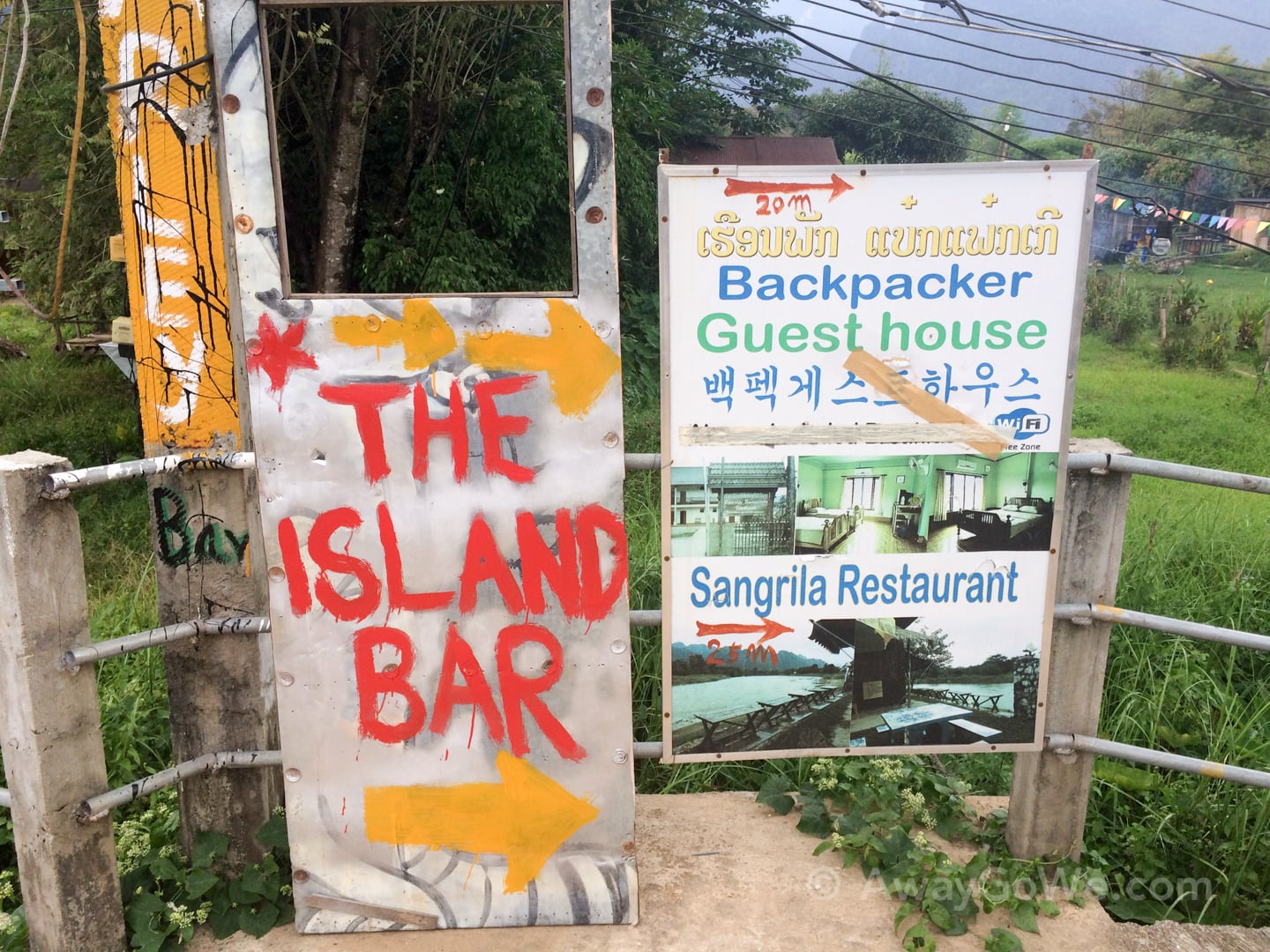
So, where is this place? Oh, there it is…
Sweet.
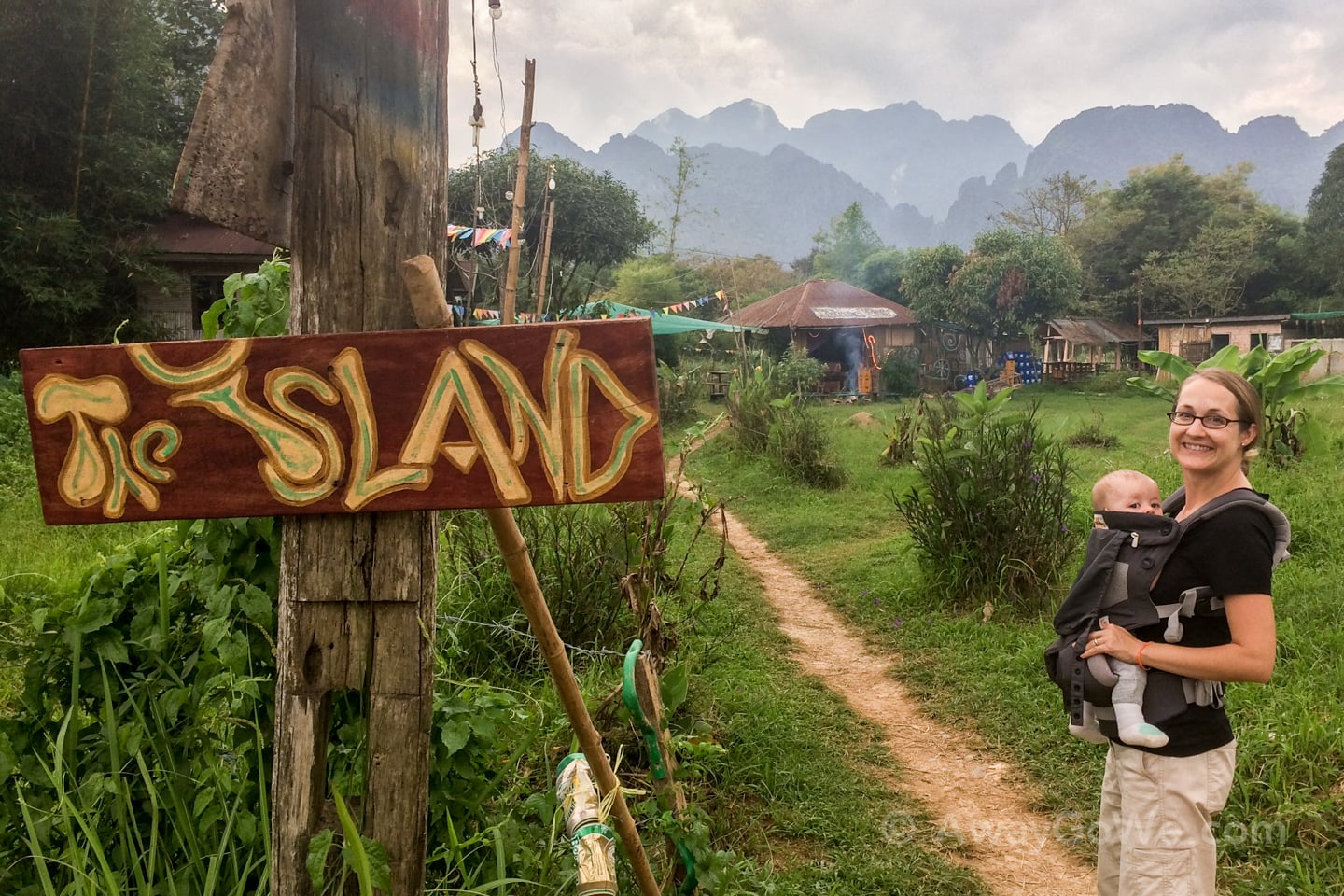
We weren’t sure what exactly the island bar was — Personal residence? Bohemian paradise? Bungalows of ill-repute, perhaps? — regardless, they had cold beer and tables with a view, so we made ourselves at home.
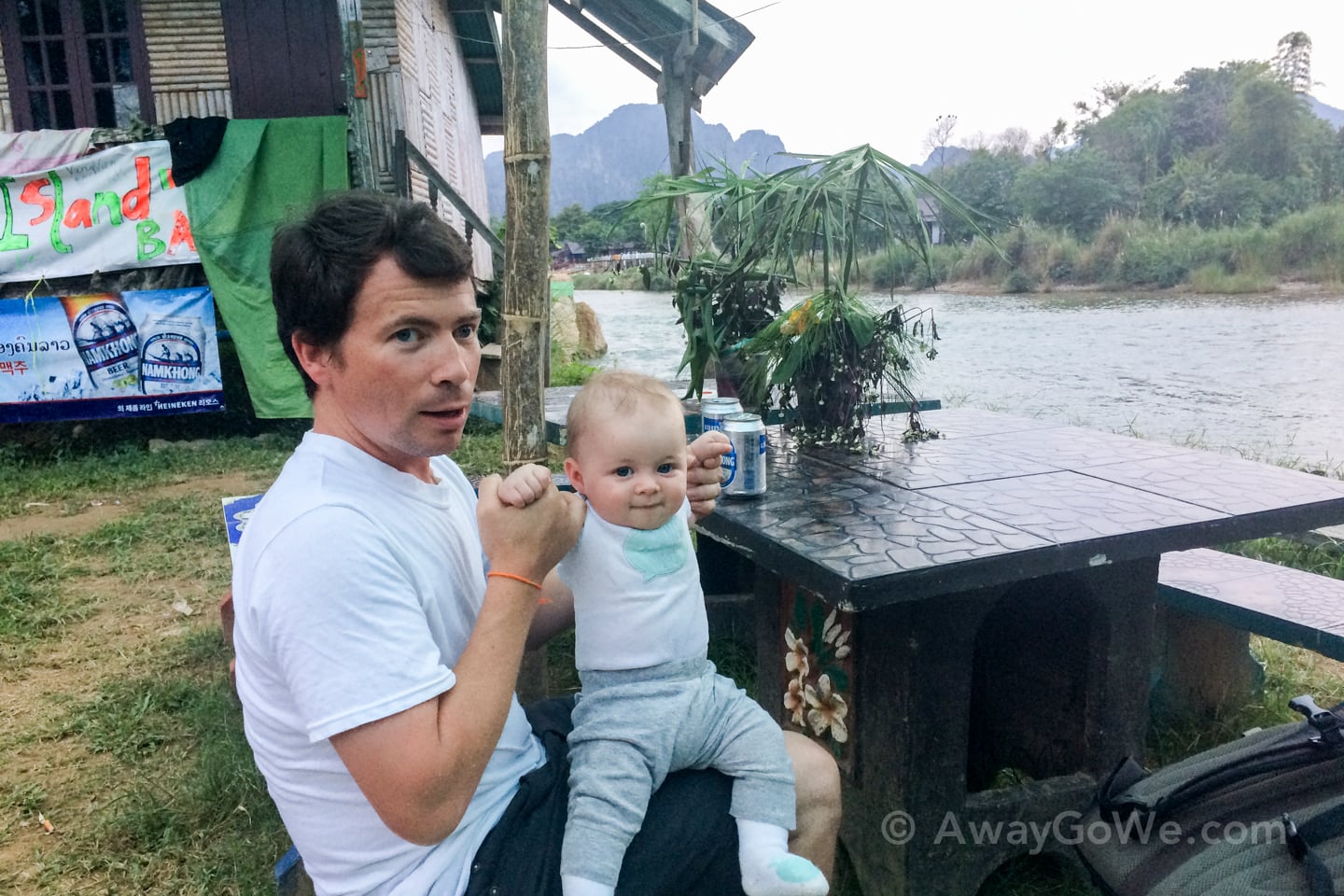
Walking back over the island bridge and up to town, we were treated to yet another night of gorgeous sunsets.
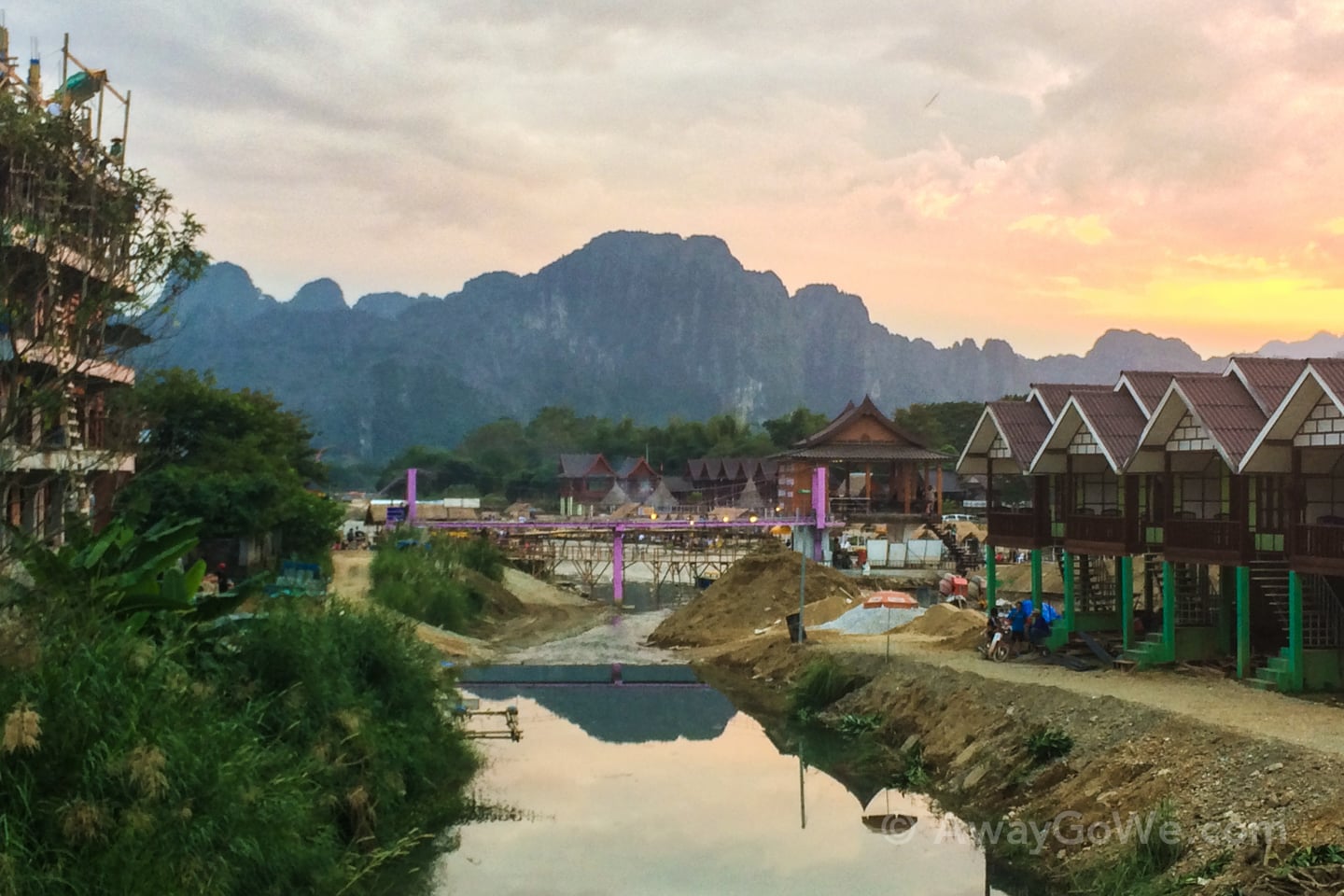
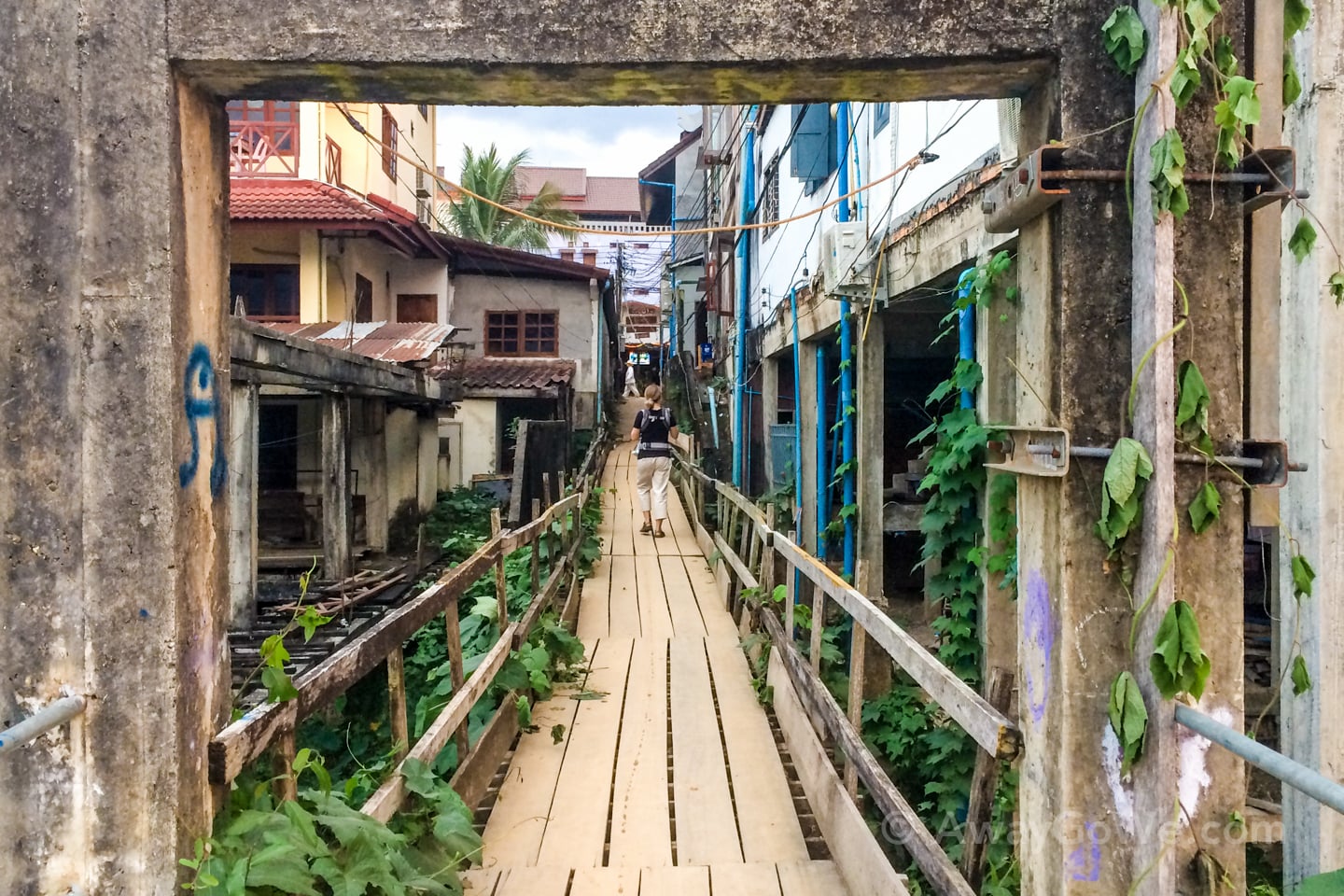
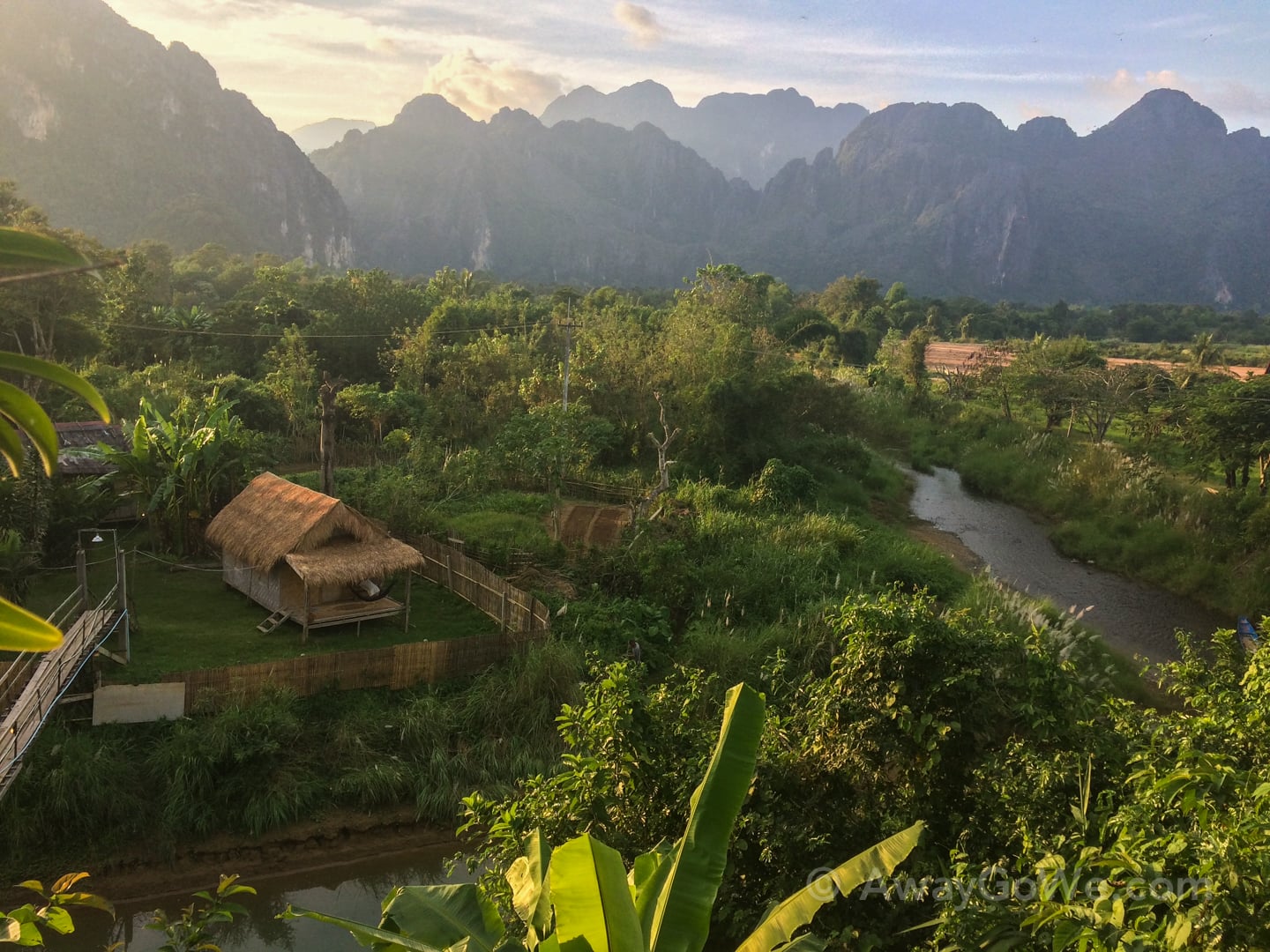
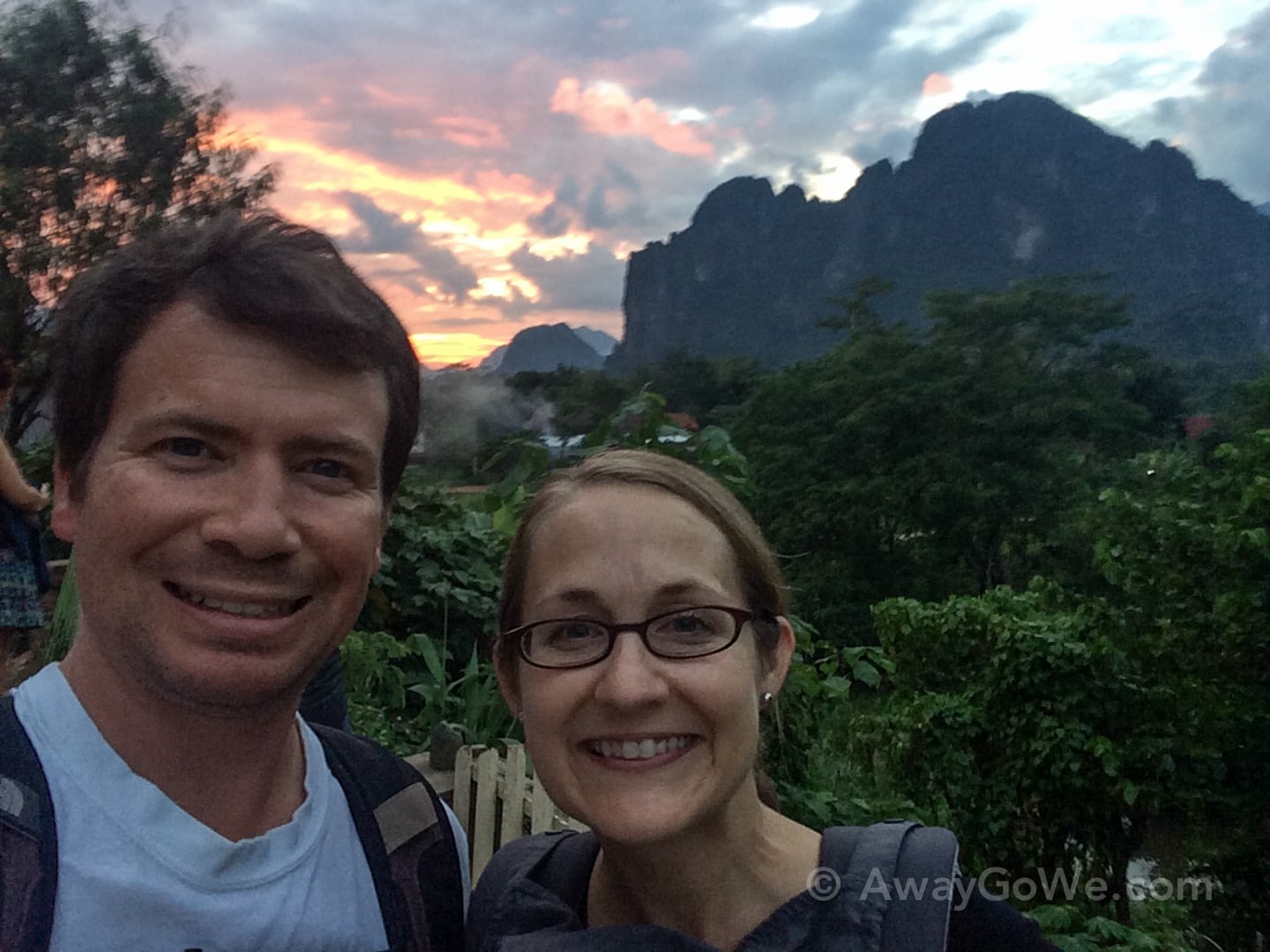
I’m still not sure what to make of this place. It’s both parts enigmatic and straight-forward — jaw-dropping gorgeous in its incomparable surroundings and unsettling in its rapid development.
These days, Vang Vieng bills itself as an eco-tourism destination, but there is little evidence of an ecological-friendly tourism framework in place. The construction of Chinese-style concrete monstrosities appear to far outnumber the construction of legitimate “eco-lodges,” and tour-companies seem happy to continue to cater to low-priced mass tourism.
The old way of doing business in the former Party Capital of Southeast Asia was sharply criticized for its negative impact on Lao culture and society, and many locals were happy to see the party move on. It’s not clear, though, whether the old model’s replacement will be any better for the community as a whole.
If places in the region like Vang Vieng were to embrace a Costa-Rica-type model of tourism, in which the local community stands to benefit economically, culturally and ecologically from environmentally sustainable and socially responsible business endeavors that invest earnings back into the community, we could expect to see a Vang Vieng in ten, twenty, and even fifty years that is truly prosperous and retains the core essence of what makes it such a special place.
Disappointedly, the current target demographic in Vang Vieng tourism — the nouveau-riche of Laos and its neighbors — seem much more interested in status symbols and wealth accumulation than they do in leaving a substantive cultural and natural legacy for their children. But then again, that’s just one outsider’s personal read on the situation. I sincerely hope I’m proven wrong.
